






























































































A Sea of Virtual CE, up to 32 CEUs
June 18, 19, 26 & 27, 2021
For more information, see page 24.
The Publication of the California Veterinary Medical Association
Publisher Dan Baxter
Managing Editor Kristen Calderon
Editor Taryn DeOilers
Publication Designer Howard Steffens
Registration ends
June 11th!
Diversity and Inclusion in the Veterinary Profession: Why It Matters
August 25, 2021 | 5:30 PM-6:45 PM (1.5 CEUs)
August 31, 2021 | 12:30 PM-1:45 PM (1.5 CEUs)
This seminar is complimentary to all veterinary professionals.
For more information, visit the Learning tab at cvma.net.
California Licensing Curriculum (CLC)



September 12-14, 2021 | 27 CEUs

For more information, see page 29.
CVMA Fall Seminar
October 8-10, 2021 | 12 CEUs for veterinarians and 8 CEUs for technicians and CVMA CVAs. For more information, see page 30.
Diamond Sponsor Ruby Sponsor Topaz Sponsor PREFERRED
Sponsored by
Registration for all CVMA events can be made online by logging onto cvma.net or by calling 800.655.2862.
CVMA-A liated Programs
California Veterinarian (ISSN 00081612) is published bi-monthly by the California Veterinary Medical Association, e-mail: sta @cvma.net. California Veterinarian is an o cial publication of the California Veterinary Medical Association. Annual subscription rates to non-members: $50 U.S., $60 Canada/Mexico, $70 overseas. Price per single copy: $10 current year, $12 back issues. Periodicals postage paid at Sacramento, CA and at additional mailing o ces. POSTMASTER: Send address changes to California Veterinarian, 1400 River Park Dr., Suite 100, Sacramento, CA 95815-4505. Phone: 800.655.2862
The CVMA and California Veterinarian assume no responsibility for material contained in articles and advertisements published, nor does publication necessarily constitute endorsement by them. ©2021 CVMA

Classified Advertising Laura Phillips
Board of Governors
President Dr. Dirk Yelinek
President-Elect Dr. Elisabeth Klapstein
Member-at-Large Dr. Keith Rode
Members Dr. Peter Bowie
Dr. Patrick Connolly
Dr. Larry Correia
Dr. Jennifer Hawkins
Dr. Michael Karle
Dr. Adam Lauppe
Dr. Julia Lewis
Dr. Bruce Lindsey
Dr. Teresa Morishita
Dr. Marshall Scott
Dr. Dianne Sequoia
Dr. Peter Vogel
Student Representatives
University of California, Davis Megan Dietz
Western University Christopher Morrill
Treasurer Dr. George Bishop
Chair, House of Delegates Dr. Brent Wooden
CVMA Staff
Executive Director Dan Baxter
Assistant Executive Director Della Yee
Director of Communications Kristen Calderon
Director of Finance Kathy Van Booven
Director of Regulatory Affairs Dr. Grant Miller
Design and Marketing Manager Howard Steffens
Membership and Student Services Laura Phillips
Manager
Publications Manager Taryn DeOilers
Accountant Bernice Evans
Communications Coordinator Nicole Campos
Finance Coordinator Sharmele Browne
Meetings and Events Coordinator Lily Briggs
Membership and CE Coordinator Jennifer Smith
Receptionist Mary Young
Display Advertising
Please contact Taryn DeOilers at 916.649.0599 ext. 16 or email tdeoilers@cvma.net.
Tell us what you think!
Want to comment on what the CVMA is doing or writing about? Send an email to comments@cvma.net or call 800.655.2862. Your thoughts and opinions matter to us. The CVMA is YOUR association! The CVMA is 7,800 voices strong. Let us hear your voice!
One of the CVMA’s raisons d’être is to monitor, comment on, lobby for or against, and sometimes sponsor proposed statewide legislation impacting veterinary medicine. Each year in February, new legislative bills are announced at the Capitol, and in the weeks that follow, the CVMA culls through those many hundreds of bills to determine which might affect the veterinary profession or animal welfare. We analyze those potentially impactful bills, and decide whether to support, oppose, or “watch” them. For those bills deemed most critical, we produce letters articulating the CVMA’s position and often work closely with legislators, legislative staff, and other stakeholders to produce the desired result.
This process involves many people within the CVMA’s leadership, including Board and committee members and internal sta . While not everyone (including, occasionally, some of our members) always agrees with the positions ultimately taken by the CVMA, all of those positions are the product of a rigorous vetting conducted by people—your leadership—who have closely reviewed and discussed the issues.
One issue we have frequently confronted is legislation proposing to ban the practice of declawing. Of all of the items we face as a professional association, this is the one that produces the most scrutiny—and commentary—from the general public. Since 2003, when the CVMA opposed the City of West Hollywood’s adoption of an anti-declaw ordinance, we have encountered significant outcry from individuals and organizations who believe an institutional position against proposed declaw bans is outdated and inhumane. This outcry is renewed each time a proposed piece of legislation is introduced seeking to e ectuate a declaw prohibition.









































And so it went this year. In February, shortly before the legislative deadline, a new declaw bill—Senate Bill 585—was proposed. Similar to bills from prior years, SB 585 sought to ban declawing in situations other than for “therapeutic purposes,” and additionally would have imposed a requirement for veterinarians to provide reporting information to the Veterinary Medical Board, including confidential patient/client information, concerning the procedure.
As with other 2021 measures, SB 585 was put through the above-described review process, and the CVMA adopted a position opposing the bill. This position was not based on the CVMA’s support for declawing as a specific procedure, but instead on the following two principles: (1) that veterinarians themselves are in the best position to define what constitutes the permissible practice of veterinary medicine; and (2) that the veterinary profession is progressive and self-regulating in its scope of practice as evidenced by the fact that declaw procedures are now rarely performed. To codify a law that prohibits—or mandates—the use of a given clinical procedure in a given circumstance risks removing patient care from the expert hands of the veterinarian, and replacing the Veterinarian-Client-Patient Relationship with a proscriptive framework imposed by persons outside the profession.

After the CVMA published its position, we were met with pointed criticism from people vehemently opposed to declawing. We nonetheless stayed the course and maintained our “oppose” position for the reasons specified above. In the end, while SB 585 was withdrawn in mid-April, there is a high likelihood that a similar bill will return next year or thereafter. If so, we will follow the considered direction of our leadership, as we always do.
Declawing is not popular amongst either the general public or veterinarians, which is why it is so nettlesome that the two above-mentioned principles must be championed on a playing field related to such a controversial procedure. However, we do not always have the luxury of selecting our playing fields; instead, we have to take the issues as they arise, and do the best we can with them. Whether the issues are polemical or routine, we take seriously our responsibility as advocates for veterinarians and animal welfare and know that both interests are best served when veterinary medical decisions are made by veterinarians.


 Dan Baxter, Executive Director
Dan Baxter, Executive Director

It is hard to believe almost one year has passed since my virtual graduation. In recent weeks, there has been a renewed sense of hope that life might return to normal. I have been so elated to see fellow veterinarians have the opportunity to receive their COVID vaccinations. It has been no small feat to have veterinarians included in the 1a tier. I have been very grateful for CVMA’s tireless work to make this possible. It has also been remarkable to see veterinarians vaccinating people. This has been another reminder of the broad and often unexpected opportunities this profession has to o er. So much has changed in the course of one year — not least of which has been my development as a veterinarian.
When I started in June of 2020, I had little idea of the depth of responsibilities and leadership that my role would require of me from day one. During any given day, the front desk sta , assistants, and clients look to me for guidance, education, and reassurance. It became very clear to me just how much my behavior and attitude can impact entire situations.
In recent months, I have spent a considerable amount of time working with our newest sta members. This profession is humbling in many ways, including when working with your sta . Training sta members forces me to check my expectations at the door. Often they are new not only to the veterinary field, but also to the medical field in general. In practice, that can frequently manifest as us literally and figuratively speaking di erent languages. To succeed as a team, I must provide detailed explanations delivered calmly and clearly. After each appointment, I check in with my assistants to maintain consistent communication and to request their feedback. Since I have started taking the time to explain to my sta members the reasons behind why we do certain things, I have seen a remarkable di erence. They are more engaged, prepared, and e cient.
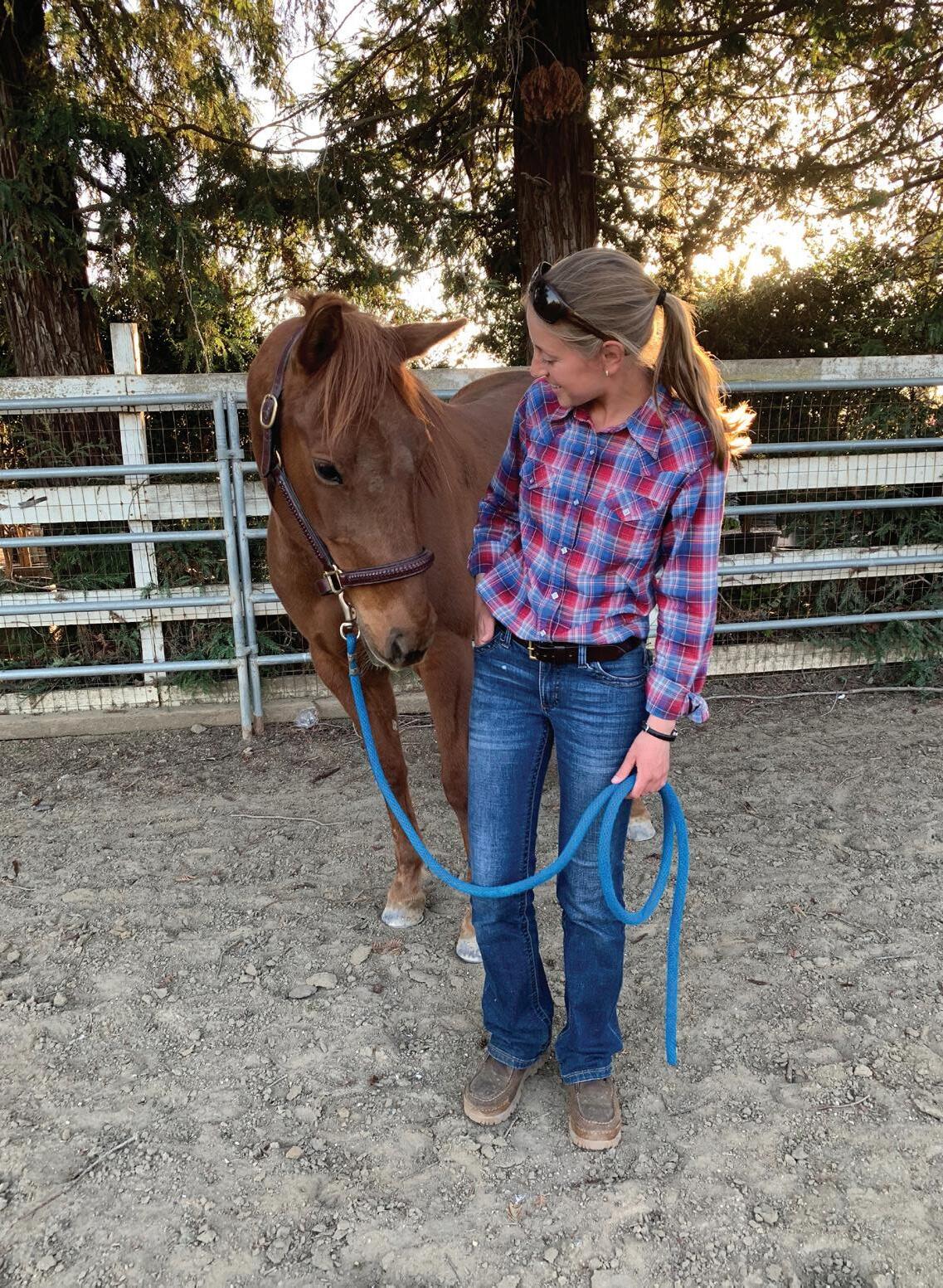
Having happy, well-trained, and motivated sta benefits the practice and me. Not only do my days run more e ciently now, but they are also considerably more fun. I spend more time with the sta members than I do with friends and family combined. As such, it has definitely been worth the time investment for me. Furthermore, I
try to thank my assistants by taking them out to lunch or buying them co ee at least monthly. It is a small gesture that I hope underscores my appreciation and our bond as a team. It has been so heartwarming to hear the sta members express how much they appreciate the learning opportunity, not to mention the positive feedback I have received from clients that appreciate our synergy.
This profession has so much to o er. Undoubtedly, it is trying at times; however, the people you work with can make all the di erence. At the end of the day, it’s all about perspective and how you look at it. Good luck and congratulations to the Class of 2021!

The CVMA is proud to support Dr. Grace Bransford in her run for AVMA President-Elect!
Dr. Bransford, the AVMA’s current Vice President, has devoted 26 years to organized veterinary leadership, including longstanding service with both the CVMA and the AVMA. Dr. Bransford has been a member of two AVMA councils, three committees, a task force, and the 20/20 Vision Commission. A born and bred Californian, Dr. Bransford has served on the CVMA’s AVMA Advisory Committee since 2012 and was previously a member of the CVMA’s House of Delegates, Finance Committee, and Insurance Committee. Dr. Bransford’s goals as President include increasing the AVMA’s visibility and outreach, promoting diversity, and fostering stronger relationships both inside and outside the association. The AVMA House of Delegates will vote on the next President-Elect at its meeting in late July. Best of luck, Dr. Bransford! Follow Dr. Bransford on Facebook at facebook.com/graceforavma/.
Congratulations to Dr. Richard Sullivan for his recent election as the District X Director on the AVMA Board! Dr. Sullivan has dedicated his e orts throughout his career to organizing veterinary medicine at the local, state, and national levels and has worked alongside the CVMA time and time again to support veterinary professionals. He will o cially be seated as the District X Director during the second meeting of the AVMA Board of Directors’ Convention this upcoming August. Well done, Dr. Sullivan!
Ready to play a bigger role in advocating for veterinary professionals? CVMA members have the opportunity to ensure that their unique voices are heard by serving on the CVMA Board of Governors, House of Delegates, or one of the CVMA’s numerous committees. To learn more about how you can get involved, please email the CVMA’s Assistant Executive Director, Della Yee, at dyee@cvma.net, or visit the Get Involved page under the About CVMA tab at cvma.net.

Pacific Veterinary Conference
Fall and Spring Seminars
Live and Interactive Online Seminars

California Licensing Curriculum
California Veterinary Medical Reserve Corps Disaster Training
View upcoming offerings under the Learning tab at cvma.net.

Member veterinarians receive up to one half-hour of free telephone consultation and research work per month with an attorney from Wilke Fleury LLP.
Access the Legal Services Program under the Membership tab at cvma.net.

Provides members regulatory compliance consultation, resources, and discounts on regulatory compliance products.


Visit cvma-inline.net or the Government tab at cvma.net for more information.
The CVMA legislative team, staff, and legislative advocates are constantly monitoring proposed legislation and making your voice heard at the Capitol.
Explore the Legislative Action Center under the Government tab on cvma.net.
Stay informed through the CVMA mobile app, CVMA website, CVMA Weekly e-newsletter, California Veterinarian magazine, press releases, and action alerts.
The CVMA’s exclusive insurance brokerage, Veterinary Insurance Services Company (VISC), offers specially designed personal and professional insurance program packages to members.
Visit the VISC website at visc-ins.com or call 888.762.3143.


Additional Savings
Regulatory items
Advertising
Credit card processing
Payroll processing
Electronic prescriptions, health certificates, and feed directives
Employee background screening



Check recovery services
Car rentals
Office supplies
And much more!
View the full list of benefits under the Membership tab at cvma.net.


Owner of Canyon Hills Animal Hospital and Specialty Center


Practice type: small animal
National Autonomous University of Mexico (UNAM) College of Veterinary Medicine
Members are the heart of the CVMA
What was your first job?
Magician’s assistant.

I love to spend time with my son Chase and daughter Rebecca.
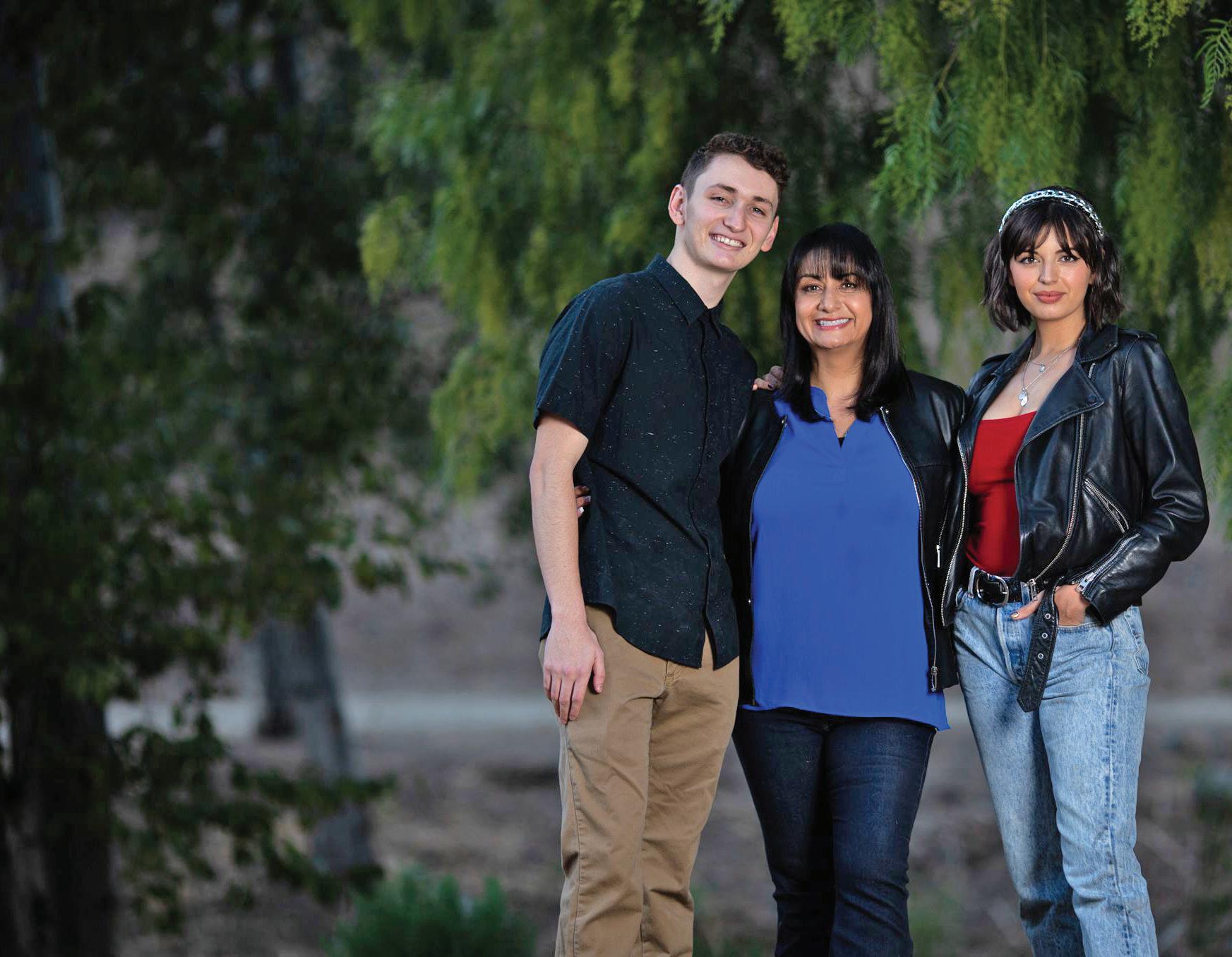
What is one thing on your bucket list?
To travel to Switzerland and watch the cows grazing on the Swiss Alps.
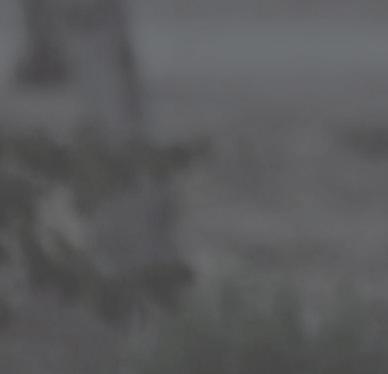
I am a CVMA member because I want to stay involved with my profession.
The most adventurous thing I have ever done was zip-lining over the Mexican jungle hanging by my legs.
The most gratifying moment at work was when my loan was approved to buy my own veterinary hospital.
The CVMA is actively representing the veterinary profession on California legislation of importance in 2021. The CVMA Legislative Committee met online on March 11 to review nearly 30 pieces of legislation that directly impact the veterinary profession, animal health and welfare, and employment law. Chaired by Dr. Dayna Wiedenkeller, the committee extensively analyzed and debated the issues and made position recommendations which were presented to the CVMA Board of Governors on March 20.
The following bills are being monitored by the CVMA Legislative Team, which is working with bill authors and committee consultants to represent the CVMA’s positions:
AB 1282 (Bloom) (coauthor Wilk): Veterinary medicine: blood banks for animals.
The CVMA has been actively involved in the issue of animal blood banking since 2019, when both Assemblymember Richard Bloom and Senator Scott Wilk separately introduced legislation to address community and closed-colony canine blood banking in California. This year, Assemblymember Bloom and Senator Wilk have co-authored legislation that seeks to phase out the two closed-colony blood banks and replace them with establishments that collect blood from communitysourced animals. The CVMA is actively participating in stakeholder meetings on this issue to represent the needs of the veterinary profession in preserving a safe and
adequate supply of blood and blood products and in determining when and how California will transition from the closed-colony model to a communitysourced model.
CVMA POSITION: Approve, Work with Author to Seek Amendments
BILL STATUS: Heard in Assembly Agriculture Committee, slated for Assembly Appropriations

SB 585 (Stern): Cats: declawing procedures: prohibition.
SB 585 was withdrawn by its author before its first committee hearing, rendering it dead for the year, but may be considered again in January. This bill was similar to a failed 2019 measure proposed by Senator Henry Stern that sought to prohibit feline phalangectomy for nontherapeutic purposes. SB 585 would have additionally required a veterinarian who performed a declawing procedure for therapeutic purposes to file a written report with the California Veterinary Medical Board (VMB) within 10 business days disclosing information about the animal patient and owner. The CVMA has historically been opposed to bills which remove the veterinarian’s expertise in decision making regarding medical treatments on a case-by-case basis within the context of a valid Veterinarian-Client-Patient relationship.
CVMA POSITION: Oppose
BILL STATUS: Withdrawn by Author/“Two-year” bill
The Assembly Business and Professions Committee and the Senate Business, Professions, and Economic Development Committee periodically hold joint sunset oversight hearings to review boards under the Department of Consumer A airs (DCA). The sunset review process provides an opportunity for the DCA, the Legislature, the boards, and interested parties and stakeholders to discuss the performance of the boards and make recommendations for improvements.
The VMB is being reviewed in 2021, and its report to the Sunset Review Committee is posted on the VMB website. The CVMA also submitted a letter to the Sunset Review Committee with comments on issues addressed by the VMB in its sunset review report. The CVMA is representing the profession throughout the sunset review process.
CVMA POSITION: Watch, Work with Author
BILL STATUS: Assembly Appropriations Committee
The CVMA has submitted comments to the Joint Sunset Review Committee regarding issues with the California Board of Pharmacy (BOP), primarily concerning veterinary compounding. In recent years, the BOP has passed regulations and changed enforcement policies resulting in veterinarians facing increased di culties in obtaining compounded medications for in-house use and dispensation to clients. The CVMA has engaged the BOP directly on these issues but also feels that there is a need for legislative changes during the BOP sunset review. The CVMA has requested that one BOP-appointed member be a compounding pharmacist and that certain parts of the Pharmacy Act exempt veterinary pharmaceuticals to avoid unintended consequences in being able to provide medications to animals.
CVMA POSITION: Watch, Work with Author BILL STATUS: Assembly Appropriations Committee
working closely with Mr. Kalra and his sta to represent the veterinary profession on this issue.
CVMA POSITION: Support
BILL STATUS: Assembly Appropriations Committee
AB 553 (Kamlager): Pet insurance
AB 553 was heard in its first policy committee but died due to the lack of a motion. This bill would have expanded existing legal definitions pertaining to pet insurance in reference to medical advice, diagnosis, care, and treatment. Specifically, the bill would have required pet insurance policies issued, amended, or renewed in California to provide full coverage for sterilization surgery and veterinary expenses associated with the procedure. The bill would also have required 20 days’ notice of cancellation of a pet insurance policy, or at least 10 days’ notice in cases of nonpayment of premiums or fraud.
CVMA POSITION: Disapprove
BILL STATUS: Died in Assembly Insurance Committee
SB 547 (Glazer): Animals: emergency response: California Veterinary Emergency Team program.
SB 547 will create a state-funded Veterinary Emergency Team at the University of California at Davis that will assist the California Department of Food and Agriculture (CDFA) in developing and implementing all aspects of the California Animal Response Emergency System (CARES). Through numerous deployments to some of the largest disasters in California state history, the CVMA has become familiar with the strengths and weaknesses in California’s animal emergency system and believes that SB 547 represents a major step forward in helping animals during disasters.
CVMA POSITION: Support
BILL STATUS: Senate Appropriations Committee
CVMA POSITION: SUPPORT
• SB 703 (Hurtado): Diseased animals: laboratory services.
AB 384
Current law permits veterinarians to discuss the use of medicinal cannabis for animal patients with clients but prohibits cannabis recommendation. Over the past two years, an unsuccessful attempt was made in the form of SB 627 (Galgiani) to permit veterinarians to recommend cannabis. This year, Assemblymember Ash Kalra has introduced new legislation to permit such recommendation. Mr. Kalra is experienced in this subject, as he previously carried the 2018 legislation (AB 2215) that allowed veterinarians to discuss cannabis. The CVMA is
• AB 1285 (Flora): Poultry health advisory committee: eradicate poultry diseases.
CVMA POSITION: APPROVE
• AB 258 (Villapudua): Emergency shelters and transitional housing assistance: pets.
• AB 468 (Friedman): Emotional support dogs.
• AB 646 (Low): Department of Consumer A airs: boards: expunged convictions.
• SB 344 (Hertzberg): Grants: homeless shelters: pets and veterinary services.
CVMA POSITION: DISAPPROVE
• AB 1236 (Ting): Healing arts: licensees: data collection.
• SB 252 (Wiener): Toxicological testing in dogs and cats.

CVMA POSITION: WATCH
• AB 70 (Salas): Gene synthesis providers.
• AB 253 (Patterson): Animal welfare.
• AB 864 (Low): Controlled substances: CURES database.
• AB 995 (Gonzalez): Paid sick days: accrual and use.
• AB 1026 (Smith): Business licenses: veterans.
• AB 1102 (Low): Telephone medical advice services.
• AB 1306 (Arambula): Health Professions Careers Opportunity Program.
• SB 376 (Stern): Wildlife: prohibitions on possession, transportation, and importation of wild animals: live animal markets.
• SB 453 (Hurtado): Agriculture: Biosecurity and Emerging Infectious Disease Fund.
• SB 519 (Wiener): Controlled substances: decriminalization of certain hallucinogenic substances.
• SB 772 (Ochoa Bogh): Professions and vocations: citations: minor violations.
For specific information on bills or to track CVMA-monitored bills through the legislative process, visit the CVMA’s online Legislative Action Center, which now has a new look and format. The Voter Voice platform makes searching for relevant legislation easier and more user-friendly. Check out the improved format by logging onto cvma.net and clicking on the Government tab.
In honor of May being Mental Health Awareness month, we reached out to our readers for their input on how they deal with the stresses of the veterinary profession and general life challenges. Thank you to those who provided the following tips:
Put together a grief support model. We remodeled an area as a quiet room where sta could go and take time they needed after particularly hard cases. We focused on our work/life balance and health, etc.
Drink some water. Staying hydrated helps me stay focused on tasks that need to be accomplished.
Having pride in our jobs and the work we do is a huge part of our mental wellbeing after long days/weeks.
I take time to talk to my family, knit, or quilt once I get home.
Create a compassion fatigue program. So far, we have planted flowers in a quiet area for people to sit. Moving forward we will have a peer support group for those who need to talk about their grief or compassion fatigue. We all try to encourage each other and remind ourselves and others that it is all right to grieve the loss of animals.
Find time to go outside, even if it’s only for five minutes. This gives me a peaceful sense, even in an urban environment.
Fifteen minutes bathin’ in the sun! Inside under a window or outside - vitamin D, baby!
Hard kombucha! Good for the tummy and so many GREAT brewers in Cali.
Round of 10 X 3 squats, 60-second wall-sit or plank, pushups, or whatever gets you breathing in a methodical pattern that can re-set your brain.
Fifteen minutes of shooting hoops (I’m terrible, but sprinting after the ball following a missed shot is all part of it) or dancing - get your sweat on and re-set!!
Sitting, listening, and viewing: plants, insects, birds, rocks, stars... it’s all been around waaaay longer than we have and can help put things into perspective.
Sing or hum a lot - even just singing sentences makes things funny. “Let’s get you some laaaaasix so you don’t dieeeeee!” A tech caught on and we sang out sentences together and made the whole sta laugh that shift! To sing a sentence, you don’t need to worry about whether your voice is good or bad!
This profession can be tremendously rewarding but it can also be incredibly taxing, both mentally and physically. This series—Renew—explores wellness for veterinary professionals from a variety of angles...physical, mental, and emotional. We hope these articles provide both insight and inspiration for a lifetime of wellness and renewal.





I’m a big fan of the Marvel movies. Not like, goingto-Comic-Cons-dressed-like-Thor kind of fan. But I’ve definitely watched every single Marvel Universe movie at least a dozen times. There’s something about these superheroes that pulls me in.
Just the other day, my wife and I were watching an episode of WandaVision and I found myself wondering, “Could Wanda beat Thanos in a fight?” So, I turned to Google, typing into my search query, “Who is stronger, Wanda or Thanos?” It depends on the source you read, but it seems that Wanda’s powers are potent and only grow stronger the angrier she gets. If Wanda were to find herself in a particularly perturbed state, it is possible she could kick Thanos’ butt all by herself.
Such strength is alluring. We admire it, revel in it, and even find ourselves a bit jealous of it. As human beings, we yearn to be strong so we can persevere through, overcome, and thrive despite the obstacles we seem to inevitably encounter along the journey of life.
Well, I’m here to tell you something. You already have superpowers. I know this because I know two things about you: you are a veterinary professional, and you are reading this article right now.
In a compelling piece of research published in 2011, Mark Seery proved me right. In his study, Seery measured variables related to adversity, challenge, and life stress. He plotted these “stress scores” alongside well-being variables like life satisfaction and resilience.
We tend to believe our resilience superpower comes only in the absence of adversity. Put another way, we assume those who have things easiest are likely to be the happiest and most resilient. On a graph, this would look like two lines going in opposite directions. The line for resilience and happiness would start in the top left corner while the line for stress would begin on the bottom left. As the stress line moved up and to the right, a straight arrow toward the upper corner of the graph, the resilience and happiness line would move down toward the lower right corner, decreasing as stress increases. The graph would look very much like a big “X”—an appropriate shape because it’s all wrong.
Seery’s research paints a very di erent picture. It turns out that, on average, people with the easiest life—the least amount of distress—tend to have the lowest resilience and life satisfaction scores.
Resilience is not a superpower we find outside ourselves. It is a capacity we are all born with, like a muscle already in our body. Much like muscles grow when challenged by increasingly heavy weights, our resilience superpower is unleashed and enhanced not despite our struggles, but because of them.
Seery’s findings drew a graph that wasn’t X-shaped but was instead U-shaped. As he might say, a moderate-tosignificant amount of struggle in life is actually good for us.

Imagine a large, healthy tree in your yard. One day, a summer storm brings a tornado to your area. Though
the tornado doesn’t hit your tree directly, it comes close enough to violently shake it. The trunk, though challenged, stays strong and the tree survives, but not without damage. The storm passes; the tree still lives— hurt, but alive. And over time, new branches grow, stronger than the ones they replaced. That is a visual example of what psychologists call reconfiguration resilience.
I’m not sure there are words to fully shine light on the unprecedented discomfort, uncertainty, and pain 2020 brought. And yet, like the tree, you were harmed by it but not destroyed. You still stand and your superpowers continue to grow.
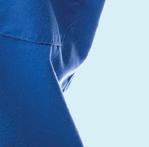
Research has shown that when we take stock of the obstacles we have endured and overcome, it can buoy our sense of strength. Looking back at how our resilience muscles have been challenged can empower us moving forward.

Shine light on the power you already possess:
Set aside 10-15 minutes, undistracted and uninterrupted.


Think back, at first generally, on what you endured in 2020—how it felt and how it impacted you. Then, hone in on a particular challenge—something you personally faced and got past in 2020 that was particularly hard for you.
Now, write out your answers to these three questions:



1. Having gotten past that challenge, what did you learn about your own strength?
2. What new skills, abilities, or way of thinking did you acquire having faced that challenge?










3. How can you use the lessons from #1 and #2 to help you with a challenge you’re facing right now?








You’ve answered the three questions… now what?










Well, consider our Marvel example….
Spoiler alert— despite all their powers and their
strength in numbers, the Avengers lost to Thanos the first time around. With the snap of his finger, Thanos wiped out half of all life in the universe while our heroes helplessly watched. For a few years the pain of that loss was raw and they struggled to move past it—until Ant Man showed up with a tiny flame of hope. Sparked by this, they looked back on their experience with a new perspective and learned from their struggles. Through the agony of their initial defeat, they recognized their resilience superpowers—collectively, their wit, might, and heart got them through the worst time in their life. Maybe it could help them overcome what now faced them. It turns out, they did.
Your past struggles have shown you strengths and powers you already possess. And through those struggles you’ve learned new skills, approaches, and ways of thinking and being. There are important lessons that can help you endure and overcome whatever you might be facing today.
So sit with your answers to those questions for a few minutes and think about them. Look for your superpowers and consider how they can serve you now, today.
Josh Vaisman, CCFP, MAPPCP
Josh Vaisman is the co-founder of Flourish Veterinary Consulting LLC, a business devoted to promoting the mental wellbeing of veterinary professionals. He has obtained certificates in areas such as Positive Psychology, Workplace Culture, and Building E ective Teams and is pursuing a Master’s Degree in Applied Positive Psychology and Coaching Psychology. Fun fact: Josh is also an avid beekeeper who teaches beginning beekeepers how to tend to their buzzing buddies.

This wellness series is proudly brought to you by a sponsorship from Boehringer Ingelheim Animal Health.
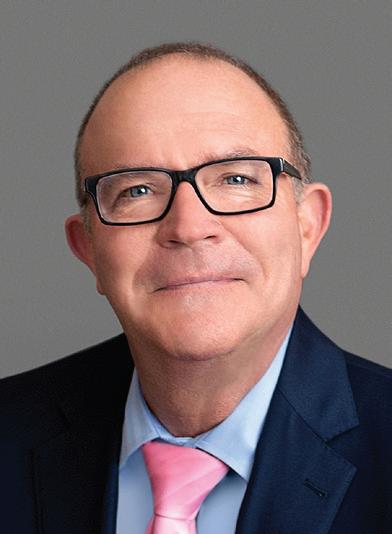
As my term as your CVMA President draws to a close, I want to take a moment to reflect on a subject close to my heart, and on which the CVMA plans to take a more active role: diversity and inclusion.
At the CVMA’s October 2020 Vision Planning meeting, a broadranging and multicultural group of veterinary experts came together to discuss critical issues facing the veterinary profession, and the CVMA’s role in tackling those issues. One of the primary items identified during that session was the CVMA’s obligation to take appropriate steps to cultivate diversity within the profession, including through member engagement, public awareness e orts, and even new and di erent member benefits.
That charge resonated with me. As a child growing up in western Massachusetts, I vividly remember Dr. Martin Luther King, Jr. coming to speak at Springfield College at the commencement ceremony in June of 1964. As with many of his public appearances, Dr. King carried out that visit against the FBI’s advice due to concerns about potential violence against him. My father was an auxiliary police o cer assigned to Dr. King’s security detail, and one of the published photos of Dr. King’s visit captures my dad, a chain smoker, flicking his hand nervously as he walked Dr. King and Coretta Scott King through the college to the podium. This was 10 months after the “I Have a Dream” speech and six months before

Dr. King received the Nobel Peace Prize. I have never forgotten that experience or what Dr. King stood for.
Veterinary medicine’s status as an overwhelmingly white profession continues to be entrenched. To combat this phenomenon and increase ethnic diversity in the profession, we must create more e ective pipelines to underserved communities. We must speak openly and boldly in ways that allow us to connect, educate, belong, and grow. Who we are, how and where we grew up, who our friends and family are—all of these experiences influence how we think and how we view and interpret the world. We are not all the same and our di erences are our greatest strength.
As veterinarians and leaders, how do we work towards a more diverse, inclusive profession? We can:
Respect and support our di erences and thrive on the impact those di erences have on our profession and those we serve.
Understand that the success of any enterprise depends upon its ability to recognize and draw strength from the diversity of its participants.
Acknowledge that diversity by itself is not enough. When diversity is attained, it is equally important that meaningful inclusion follows. Implicit bias and subconscious assumptions lead us to misjudgment, misunderstanding, and isolation. We must discard assumptions. Without true listening and true receptivity to the contributions of a diverse group, the battle is lost.
Inform and educate young people from all backgrounds and socioeconomic strata about the veterinary medical profession and what it has to o er, and present early-stage opportunities to learn about—and observe—the profession in action.
The CVMA knows that it has a part to play in all of this. In keeping with its leadership role in the California veterinary community, the CVMA will:
Enhance and promote diversity, equity, and inclusion, and strive to be culturally competent, acting in the best interests of all of our members.
Encourage our members to create a welcoming environment for all veterinarians, sta , and clients without bias, judgment, or prejudice.
Urge our members to (1) educate, mentor, and guide persons from all communities and backgrounds who are interested in our profession; (2) assist those already in our profession looking for opportunities to advance; and (3) inform the next generations about all that veterinary medicine is and can be.
Provide relevant educational opportunities to our Board of Governors, our House of Delegates, and our members to ensure that what we say and what we do as a veterinary community are one and the same.

In furtherance of these objectives, the CVMA will be making diversity, equity, and inclusion the keynote subject of its January 2022 Leadership Forum. Due to the disruptions caused by the COVID-19 pandemic, we were forced to shelve the 2021 Leadership Forum, but our return engagement in January of 2022 will feature a focused discussion led by Dr. Lisa Greenhill, the Senior Director for Institutional Research and
Diversity with the Association of American Veterinary Medical Colleges. We will also be holding a free continuing education seminar on August 25 and August 31, at which Dr. Suzie Kovacs—Assistant Professor at WesternU’s College of Veterinary Medicine—will dispense critical information on the subject.
Through these and other e orts, the CVMA hopes to utilize its status as a trusted and authoritative resource to help take veterinary medicine to a place where our profession looks like our society, and where our society comes to know our profession as one that is dynamic, diverse, and welcoming. We all deserve access and the opportunity to make progress to success. We need to listen, recognize existing barriers, and realize that change happens within ourselves.
It has been an honor serving as your President, and I wish all of you—and the profession—the best, now and in the future.
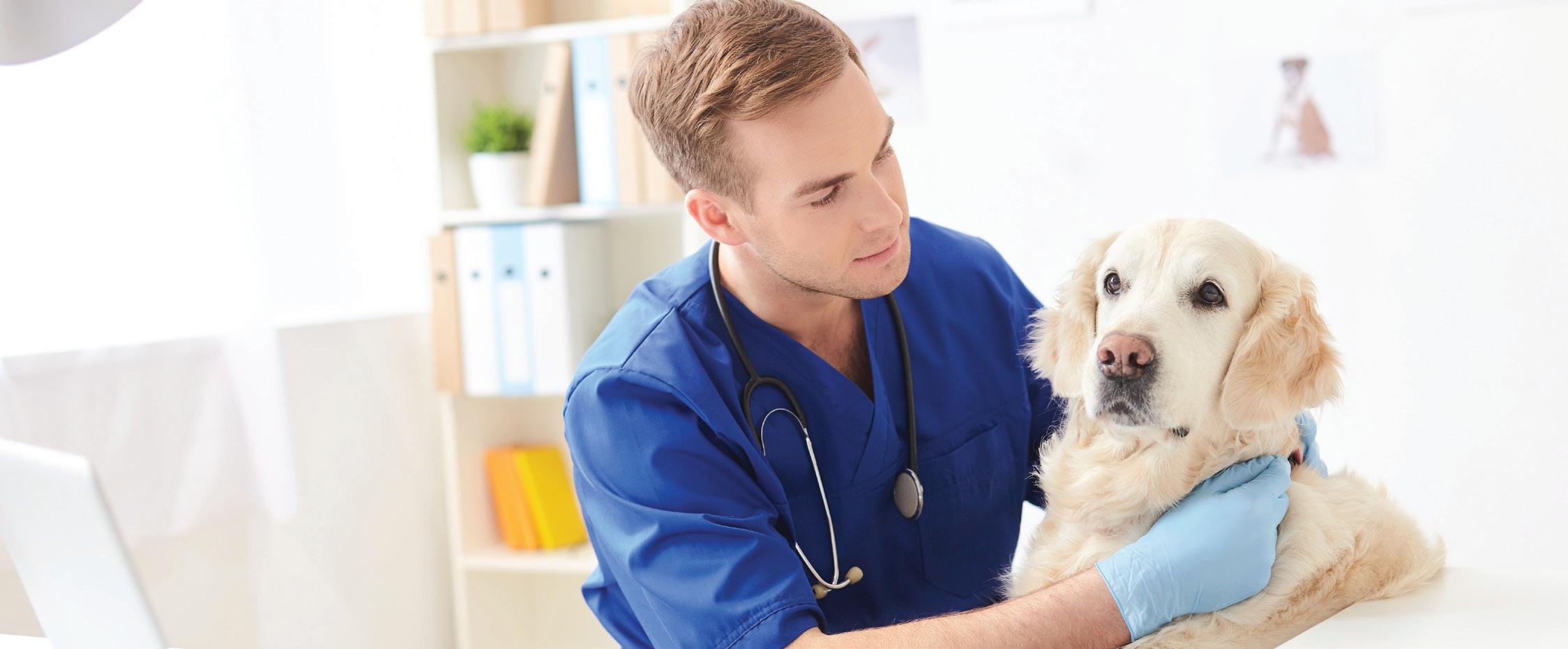
No one is at their best when they aren’t feeling well. This goes for your patients too. When they are sick, injured, or simply anxious, they can be unpredictable. This unpredictability can lead to staff members suffering bites, scratches, and strains from patient interactions. In addition to patient interaction-related injuries, staff members must also be cautious of another common workplace injury—strains from lifting heavy items like bags of food, boxes, and cases of cans. Because these injuries are all too common in veterinary practices, all staff members should be properly trained in appropriate animal handling, muzzling, restraint, and safe lifting techniques.
Among Veterinary Insurance Services Company (VISC) clients, we have found that more than 75% of veterinary workplace injuries are related to (1) strains from lifting animals or heavy items, and (2) bite-andscratch incidents while restraining dogs and cats. Fortunately, many of these injuries can be prevented with specific and diligent training. VISC clients have access to free safety training videos specific to these situations. The free training videos include:
Proper Lifting Techniques
Proper Lifting Techniques: Inanimate Objects
Restraining Dogs
Restraining Cats
How to Muzzle a Dog
The most direct way for VISC clients to access their free safety videos is to visit visc-ins.com. From the home page, click the Free Safety Videos button in the ‘Quick Links’ box.
Consistent and effective safety training for staff is essential to reducing workplace injuries; however, it is also important to make sure the practice is equipped with appropriate safety equipment. For instance, one of the most effective ways to reduce strain injury exposures is to consider engineering controls. Some examples include:
Examination tables, bathing tubs, and catch chutes that can be adjusted to varying heights
Devices to assist lifting or restraining, such as lifting tables or steps leading to elevated baths and kennels
Storing heavy or awkward items like large dog food bags between hip and shoulder height to eliminate low lifts
With the observation of necessary precautions, frequent training, and knowledge of your surroundings and patient demeanor, the likelihood—and severity— of workplace injuries can be reduced.
It is with equal parts gratitude and sadness that Veterinary Insurance Services Company (VISC) announces the departure of longtime employees—and friends—Mark Maeyama and Kathy Noe, both of whom are retiring July 1st after over four decades of service to the CVMA and the California veterinary community.


Many of you have worked with Mark and Kathy over the years. Mark and Kathy’s work with the CVMA Insurance Program began when they joined Mason-McDuffie Insurance Services (MMIS) in 1977 (Mark) and 1985 (Kathy). MMIS had been providing insurance offerings to California veterinarians since the 1960s, and immediately upon their joining MMIS, Mark and Kathy were tapped by MMIS principals Jay O’Brien and Don Hook to work with veterinarians as part of the CVMA Insurance Program. Mark worked primarily out of MMIS’s East Bay office, serving clients throughout Northern California. Kathy worked from her home base at MMIS’s Orange County office, focusing her efforts on practices in coastal Southern California.
After MMIS was acquired in 1990, Mark and Kathy worked in the same capacity for its successor agency until the CVMA decided to strike out on its own and form VISC in 2007. Eager to continue their work with the CVMA Insurance Program, Mark and Kathy—along with fellow MMIS alumnus Art Cruz—decided to join VISC on the ground floor of the first and only veterinary association member-owned insurance brokerage firm in the country. Through Mark and Kathy’s efforts, and those of their compatriots, VISC has become one of the premier veterinary insurance providers in the state of California, offering a full array of insurance products and services that are specifically designed to meet the unique needs of the veterinary community. In addition to their direct work with veterinarians and staff, Mark and Kathy were instrumental in developing and implementing risk and safety management programs specifically for use by the veterinary profession, and in creating and enhancing veterinary insurance coverage forms that remain in use today.

Mark and Kathy deeply value the relationships they have cultivated over the years with CVMA member veterinarians and staff, as well as their fellow insurance agency staff colleagues from MMIS through VISC. Over the years, Mark and Kathy collectively visited over 1,400 veterinary practices, attended over 200 local, state, and national veterinary conferences, and made numerous appearances at student events at the UC Davis School of Veterinary Medicine and WesternU College of Veterinary Medicine. Mark and Kathy’s commitment to personal, face-to-face service was a hallmark of their 45 years with the veterinary profession, and VISC’s success is due in no small measure to their contributions. Mark and Kathy’s efforts have also left VISC in an ideal position to continue its important work and to maintain the high quality of service that has become VISC’s calling card. While Mark and Kathy are leaving, VISC’s commitment to the CVMA’s membership remains steadfast.
As Mark and Kathy move into the next chapter of their lives, VISC and the CVMA wish both of them a happy and fulfilling retirement with plenty of friends, family, and much-deserved rest and relaxation. Mark and Kathy…for all you have done, we salute you!
Over 2,000 bills were introduced to the state legislature this year alone. Because of the enormous variety of issues these bills address, oftentimes lawmakers rely on resources outside the Capitol for information to make educated decisions. The CVMA Political Action Committee (CVMA-PAC) establishes the CVMA as the trusted resource for issues pertaining to the veterinary profession and the welfare of animals in California.
Developing a strong relationship with those in the state government who make important decisions regarding issues a ecting veterinary medicine and animal welfare is vital. CVMA-PAC funds provide the bipartisan resources to establish and nurture these relationships through strategic contributions to legislators and candidates, and by sponsoring CVMA representatives to attend campaign events and fundraisers, which open the door for personal contact opportunities.
The CVMA-PAC is working for you:
To establish and build relationships with key contacts in each legislative district.
To support lawmakers who are involved with issues pertaining to the veterinary profession.
To make sure veterinary interests are heard at the Capitol.
A board of veterinarians, whose mission is to protect and serve the interests of CVMA members, oversees the CVMA-PAC. Board members are tasked with preserving the financial viability of the CVMA-PAC, approving all PAC expenditures, and establishing personal outreach methods in legislative districts.
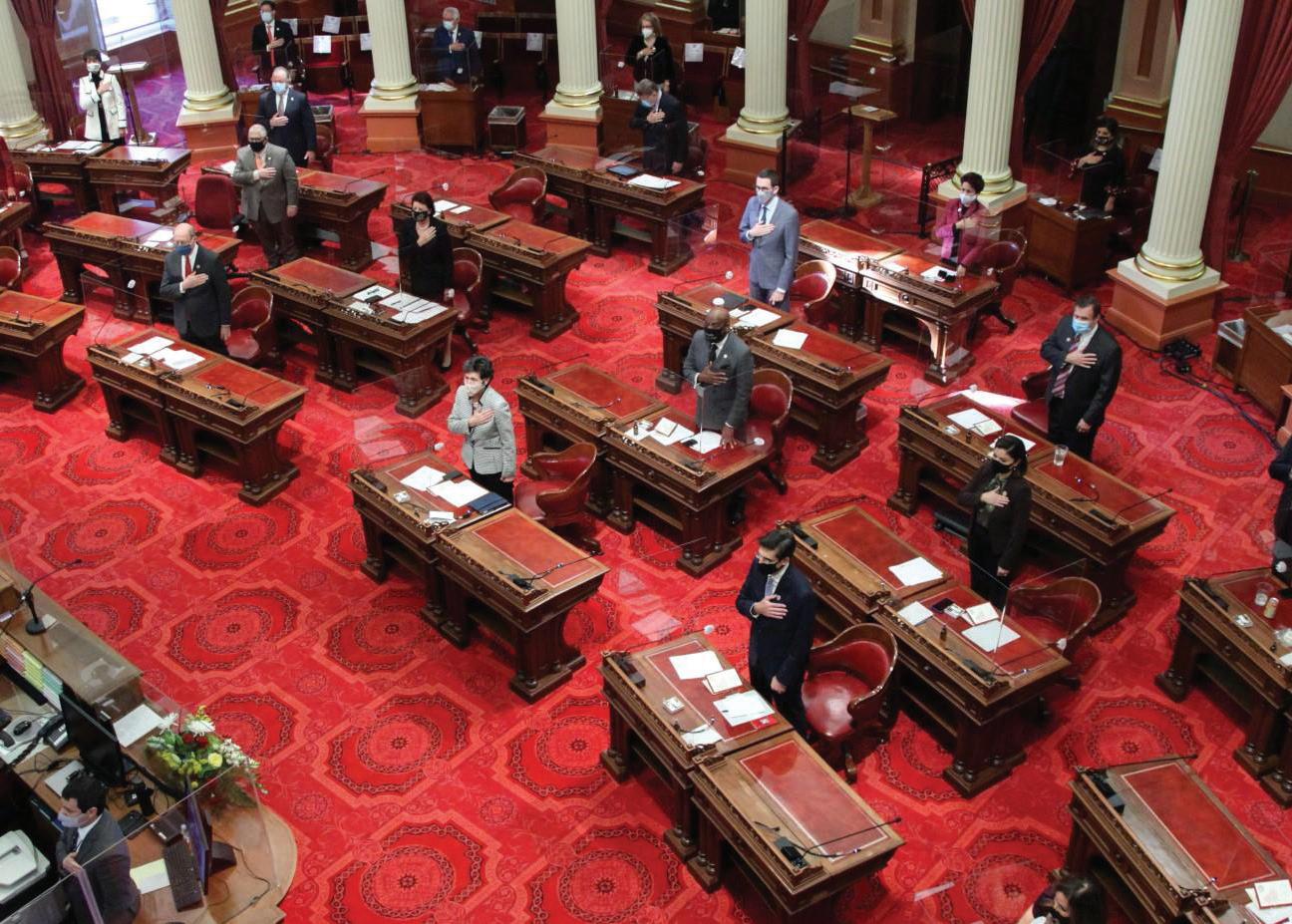
As a member of the community of California veterinarians, everyone has an important role to play in the political process. Whether it is through participation in grassroots e orts to connect with candidates and existing lawmakers, or by making a financial contribution to the CVMA-PAC, you are doing your part to safeguard the veterinary profession and the wellbeing of animals in California.
You may contribute now to the CVMA-PAC by writing a check payable to the CVMA Political Action Committee and mailing it to 1400 River Park Drive, Suite 100, Sacramento, CA 95815 (note that corporate checks are allowed). You may also contribute online by logging onto cvma.net > Government > CVMA Political Action Committee (CVMA-PAC).

Contributions to the CVMA Political Action Committee are not tax deductible as a charitable contribution for state or federal income purposes.
CVMA members might be surprised to learn how many local connections exist between veterinarians and legislative candidates or new legislators in o ce. Many veterinarians are friends and neighbors to current legislators, which is abundantly helpful to the CVMA’s e ort of building relationships and establishing key contacts in each legislative district.
Why not get involved and attend local fundraisers for candidates and incumbents and serve as a CVMA key contact? District fundraising events are great opportunities to meet assembly members, senators, and local o cials and business leaders in a casual environment.
A healthy CVMA-PAC makes participation in these events possible. Please email sta @cvma.net if you would like to attend a local fundraising event for a legislator in your community.
Caring for animals
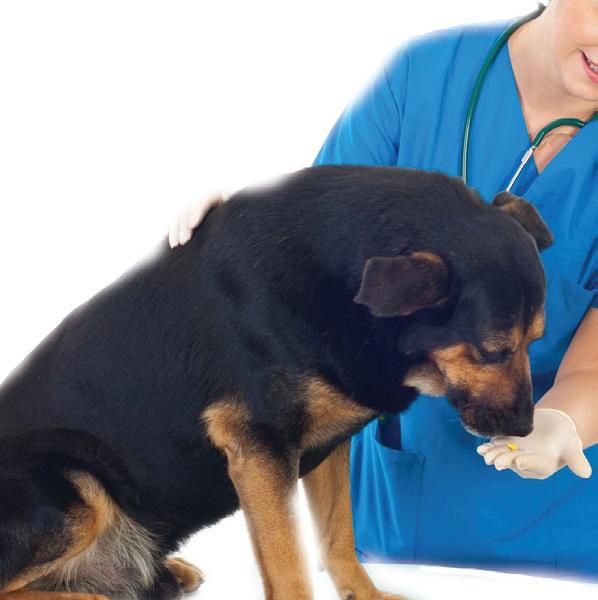

Client communication


Practice safety
Medical terminology
Breed identification

Giving medications
Proper lifting and restraining techniques
How to safely handle hemicals



The cornea is relatively dehydrated in comparison to many other tissues in the body to maintain its uniform diameter collagen fibrils in an optimal spacing. When excess water enters the cornea, it increases the space between the corneal fibrils, causing a decrease in light transmission through the cornea and a cloudy, blue hue. The outermost layer of the cornea, the epithelium, acts as a barrier via tight junctions between cells. By contrast, the endothelial cells that line the posterior aspect of the cornea have leaky tight junctions between them. This allows aqueous humor to constantly percolate into and nourish the corneal stroma. To counter this, the endothelial cells constantly pump fluid against a pressure gradient out of the corneal stroma and back into the anterior chamber. Since this requires a great deal of energy, endothelial cells are very active metabolically and thus susceptible to damage. Endothelial cells also have a poor regenerative capacity and thus do not heal well following injury. You can think of endothelial cells as big wimps!
Whenever I see corneal edema, I think of five common processes that could cause it — (1) corneal ulceration due to epithelial injury, (2) glaucoma, (3) anterior uveitis, (4) lens luxation, or (5) corneal endothelial dysfunction. The latter four processes are all due to corneal endothelial dysfunction (CED) or damage. A small corneal ulcer will cause focal, mild corneal edema while diffuse, moderate-to-severe edema, suggests an endothelial process. To fi nd the
underlying cause, I look for clues such as ocular pain, perform a complete ophthalmic examination, and conduct three important ocular diagnostic tests — Schirmer tear test I, tonometry, and fluorescein stain — to help rule in or out these fi ve common conditions. We will discuss each of these processes in detail, including what we would expect in terms of diagnostic testing, at our upcoming PacVet Live session on June 19th at 12:00 PM
How should we treat corneal edema? If there is an underlying cause such as glaucoma, uveitis, corneal ulceration, or a lens luxation, it should be treated immediately. Unless there has been extensive damage to the endothelium, once the underlying cause is removed, the edema should resolve. In cases of advanced CED, the only definitive treatment is a corneal transplant. Unfortunately, canine corneal transplants are rarely performed due to the high risk of complications and lack of appropriate donor tissues. A major complication associated with corneal edema is the formation of bullae that then rupture, leaving a corneal ulcer; accordingly, treatment is often aimed at decreasing discomfort associated with endothelial dysfunction. Besides treating the ulcers symptomatically when they occur, a medical therapy that may help decrease the number of bullae and the subsequent ulceration associated with them is the frequent application of hypertonic saline ointment or solution. However, this treatment is unlikely to reduce corneal thickness and thus improve vision. Furthermore, it may not be tolerated by some dogs due to its stinging

sensation on instillation. At UC Davis, we are currently investigating two rho-kinase inhibitors — ripasudil and netarsudil — to treat early CED, as these drugs have been shown to promote endothelial regeneration. Check out the UC Davis clinical trials website to see if your patient may qualify: https://studypages.com/s/evaluating-anew-drug-for-the-treatment-of-corneal-endothelialdystrophy-ced-in-dogs-859157/?ref=gallery

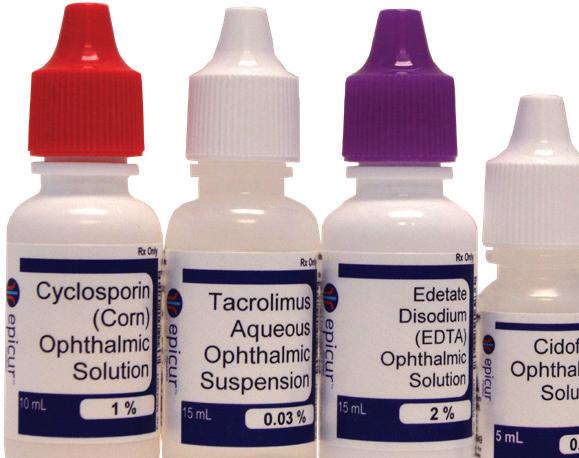
Recently, we investigated a new surgical technique (denoted as “SKCAHF surgery”) involving thinning the cornea with a superfi cial keratectomy and then
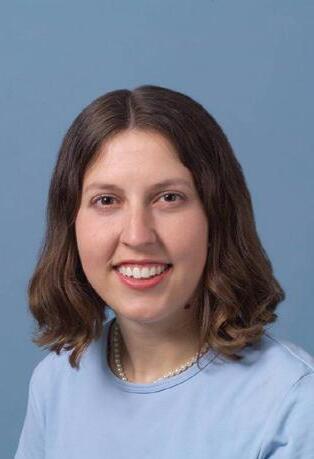
covering the keratectomy sites with a thin conjunctival fl ap to treat CED (Figure 1). A clinical trial involving 12 eyes of nine dogs demonstrated that this technique resulted in improvement in vision and signifi cantly decreased mean central corneal thickness (CCT) at one year following surgery; no adverse events were found. However, this surgery is palliative in nature, as it does not address the corneal endothelial cells that continue to die as the patient ages. Thus, some patients experience an increase in corneal thickness and subsequent loss of vision following SKCAHF surgery.

June 18, 19, 26 & 27, 2021










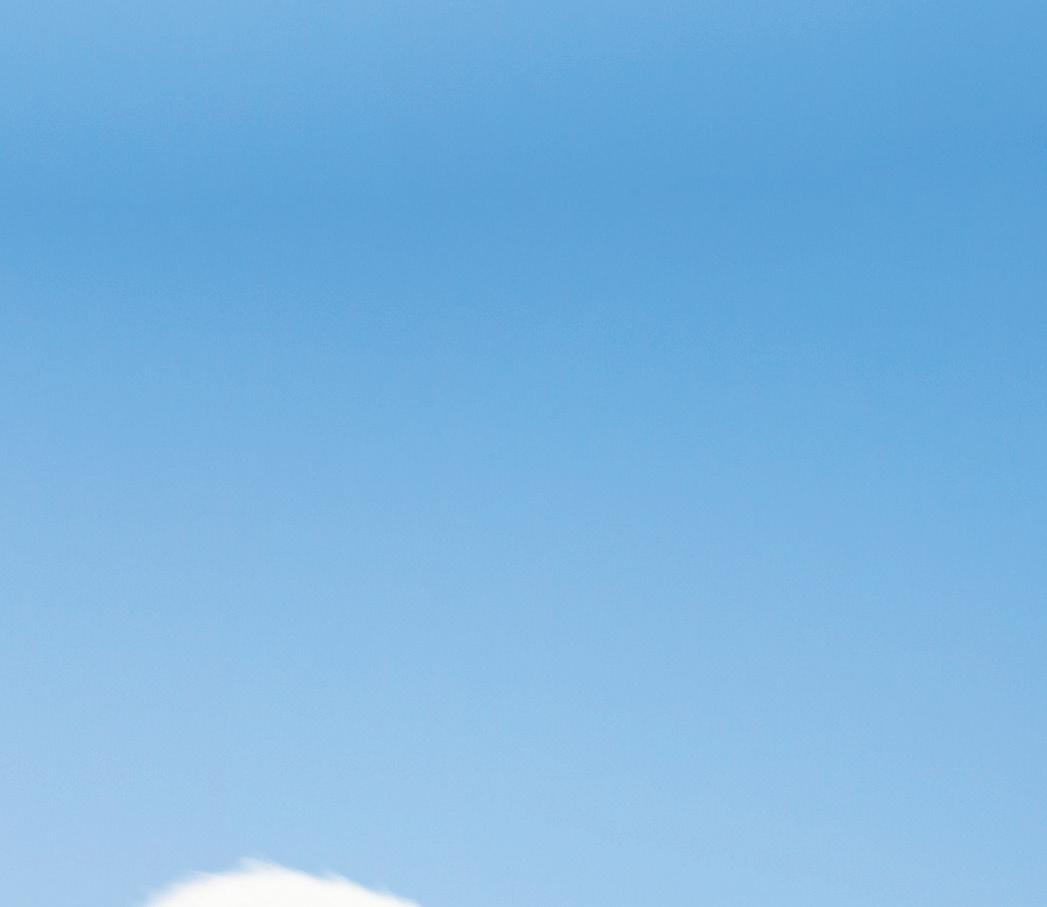


8:45 AM Log-in Log-in
9:00 AM–12:50 PM Topic: Pharmacology*
Jennifer Davis, DVM, Ph.D., DACVIM (LA), DACVCP
Sponsored by
Topic: Reptiles
Thomas Boyer, DVM, DABVP (Reptile and Amphibian Practice)
1:10 PM–5:00 PM
Topic: Dentistry/Practice Profitability
Mary Berg, BS, RVT, RLATG, VTS (Dentistry)
Topic: Radiology and Ultrasound
Kurt Selberg, MS, DVM, DACVR
Sponsored by Sponsored by
8:45 AM Log-in Log-in
9:00 AM–12:50 PM Topic: Ophthalmology
Sara Thomasy, DVM, DACVO, Ph.D.
Sponsored by
Topic: Emergency and Critical Care
Jarred Williams, DVM, MS, Ph.D., DACVS-LA, DACVECC
Sponsored by MRC CA CALIFORNIA VETERINARY MEDICAL RESERVE CORPS


1:10 PM–5:00 PM
Topic: Sports Medicine and Rehabilitation
Juliette Hart, DVM, MS, CCRT, CVA, DACVSMR
Topic: Avian
Scott Echols, DVM, DABVP (Avian Practice)
8:45 AM Log-in Log-in
9:00 AM–12:50 PM
Topic: Gastroenterology
Jacqueline Whittemore, DVM, Ph.D., DACVIM (SAIM)
Sponsored by
Topic: Emergency and Critical Care
Megan Brashear, BS, CVT, VTS (Emergency and Critical Care)
Sponsored by
1:10 PM–5:00 PM
Topic: Internal Medicine
Anthony Carr, Dr. med. vet., DACVIM (SAIM)
Sponsored by
Topic: Pain Management
Stephen Cital, RVT, RLAT, SRA, VCC, CVPP, VTS-LAM (Res. Anesthesia)
Sponsored by

8:45 AM Log-in Log-in
9:00 AM–12:50 PM Topic: Nephrology/Urology
Shelly Vaden, DVM, DACVIM, Ph.D.
Topic: Anesthesia and Pain Management
Emily McCobb, DVM, MS, DACVAA
Sponsored by Sponsored by
1:10 PM–5:00 PM Topic: Soft Tissue
David Upchurch, DVM, MS, DACVS-SA
Sponsored by
*This course satisfies the one hour of California CE requirement on the judicious use of medically important antimicrobial drugs.
Topic: Behavior
Debbie Martin, LVT, CPDT-KA, KPA CTP, VTS (Behavior)
With veterinarians, we share in a mission so relentless, it adds an entirely new dimension to the world of preventative care and therapeutics. More than passion. More than dedication. More than expertise. Because animal health isn’t just our profession. It’s our calling. And together, we are more than medicine.
Easy registration and technical support are right at your fingertips!







Register:
• Online at PacVet.net








• Fill out and mail the registration form on the next page and mail it with payment to Pacific Veterinary Conference, 1400 River Park Drive, Suite 150, Sacramento, CA 95815


• Fax it to 916.646.9156


• Give us a call at 800.655.2862 to register and pay with credit card
Registration ends June 11th!
The PacVet technology lifeguards are here to provide assistance. Want to dip your toes in the virtual conference waters in advance? Contact us before the conference to receive an invitation to try out the process of logging on with one of our staff members who can answer any questions you might have. Staff members will also be available by phone on conference days to guide you through the conference experience. We will have you surfing the online conference wave like a pro in no time!
CVMA Member: m Yes m No

June 18-19, 2021
June 26-27, 2021
Do you want us to use this information to update your CVMA profile? m Yes m No
Please check one: m DVM m VMD m RVT m CVT m LVT m Practice Manager m Veterinary Staff m Other
Registration Deadline: June 11, 2021 (Registrations sent by mail must be received by June 11, 2021)
Enclosed is a check for $ Charge my VISA/MasterCard/Discover/AMEX $
CVMA Distinguished Life Members
Please call the CVMA office at 800.655.2862 for complimentary registration.
Mail registration form with payment to: CVMA, 1400 River Park Drive, Suite 100, Sacramento, CA 95815. You may also register by faxing the form to 916.646.9156, calling 800.655.2862 or register online at pacvet.net.
Full registration includes: Up to 32 CEUs, lecture notes, and a certificate of completion. Conference/Login Information:
• Login information provided by the CVMA should not be shared with others; doing so may hinder your own access, as webinar is by pre-registration only. Attendance of PacVet Live is only for registered attendees.
By registering for PacVet Live 2021, I agree to the rules and regulations and the cancellation/ refund policy of this conference. For complete rules and regulations, visit PacVet.net.
All cancellation requests must be made in writing and submitted either by fax, email, or regular mail no later than May 21, 2021 to receive a full refund, less 10 percent administration fee. No refunds for cancellations or registrations received after this date. Refunds due will be paid within 45 days upon written cancellation request.
Attn: Meetings & Events Department 1400 River Park Drive, Suite 150 Sacramento, CA 95815
By fax: 916.646.9156
By email: info@pacvet.net
Any and all changes or substitutions after submission must be submitted in writing by either mail, fax, or email to above by June 11, 2021.
•Course materials provided by the CVMA are for use by the registered attendee only and may not be reproduced or shared with others.
•Audio, documents, materials, chat, and Q&A exchanged or viewed during the session may be recorded. By joining a session, you automatically consent to such recordings.
• The CVMA and its service provider of audio and online conferencing services are not responsible for unauthorized access to information by hackers or others that obtain access through illegal measures.


This benefit entitles CVMA member veterinarians up to one-half hour of telephone and research work per month with an attorney from Wilke Fleury LLP.
Services offered:
• Business tax issues
• Business owner succession planning
• Cal/OSHA issues
• Contract issues
• Employment law




• Licensure issues
• Practice ownership and organizational structure
• Regulatory and administrative law


• Veterinary Medical Board enforcement issues

Services not included:
• Criminal law
• Domestic relations
1. Call Wilke Fleury at 916.441.2430
2. Enter extension number 3336 for Steve Marmaduke or simply leave a voicemail in the general mailbox and your call will be routed accordingly.
3. Provide your CVMA member ID number.
The California Licensing Curriculum (CLC) course is one of the components needed for qualified veterinarians to convert a temporary California license into a permanent license, or to become licensed in California without taking the California state license exam.
This live and fully interactive online course o ers 27 CEUs from the comfort of your home or wherever you have a high-speed internet connection. State law requires the CLC to be conducted in an in-person format; however, due to social gathering restrictions resulting from the COVID-19 pandemic, the Veterinary Medical Board (VMB) and the California Department of Consumer A airs (DCA) have issued a temporary waiver to allow the course to be held virtually this year.
Veterinarians who wish to attend this course for purposes of obtaining a state license must qualify with one of the following conditions:
1. Currently hold a California temporary license
2. Be employed by the University of California at Davis School of Veterinary Medicine or the Western University of Health Sciences College of Veterinary Medicine
3. Have a valid license in good standing in another U.S. state, U.S. territory, or Canadian province*
*In order for a veterinarian in category 3 (above) to qualify for licensure through this course, the veterinarian must have practiced for at least two years and completed a minimum of 2,944 hours of clinical practice within the last three years.
This course is also open to California veterinarians who want to attend for purposes of general continuing education.

Get ready for CE and fun in the great outdoors at the CVMA’s Fall Seminar! Join us at the Resort at Squaw Creek located just minutes away from the crystal blue shorelines of Lake Tahoe. Earn CE in the mornings and enjoy mountain adventures in the afternoons.

Friday–Sunday • 12 CEUs
• Gastroenterology
Katie Tolbert, DVM, Ph.D., DACVIM (SAIM)
• Ophthalmology
Speaker TBA
Sponsored by
Technician Track
Saturday–Sunday • 8 CEUs
• Emergency and Critical Care
Amy Newfield, MS, CVT, VTS (ECC)
PREFERRED EMPLOYERS
Insurance
| a Berkley Company
If state or local mandates restrict public gatherings, the CVMA will instead o er the Fall Seminar in live and interactive online presentations and keep the spirit alive with Tahoe-themed activities and ra es.
Watch for email notifications or visit the Learning tab at cvma.net for the latest updates.
In January, the San Diego Zoo Safari Park confirmed that three of its gorillas tested positive for SARSCoV-2, all of whom have recovered. Since then, the park has vaccinated several apes with an experimental vaccine intended for pets, which was developed by Zoetis. More zoos have expressed interest in using the vaccine, and Zoetis is seeking commercial approval for the vaccine to be used in mink. Currently, there are no approved vaccines or drugs to prevent or treat SARS-CoV-2 in pets.
The California Department of Food and Agriculture (CDFA) and the California Department of Public Health (CDPH) have developed guidance for veterinarians on when it is appropriate to test animals for SARS-CoV-2: https://www.cdph.ca.gov/Programs/CID/DCDC/Pages/ COVID-19/SARSCoV2(causativeagentforhumanCoVID19) TestinginAnimals.aspx. Routine testing of animals for SARS-CoV-2 is neither informative nor recommended. In general, testing should only be done if the animal has clinical signs, other causes have been ruled out, and there is exposure to a confirmed or suspected human case of COVID-19.
Confirmatory testing through USDA’s National Veterinary Services Laboratories (NVSL) is required for all animals unless the submitting state has already confirmed a case of SARS-CoV-2 in that species. The USDA has developed a dashboard that shows the numbers of animals that have tested positive for SARS-CoV-2 in the U.S. and in each state by species (https://www.aphis.usda.gov/aphis/ dashboards/tableau/sars-dashboard). Confirmatory testing requires approval from CDFA and CDPH. It is recommended that veterinarians collect duplicate samples in case the second set must be sent to NVSL. Veterinarians should consult with their diagnostic laboratory regarding required samples; testing may require the collection of oropharyngeal, conjunctival, nasal, and/or rectal swabs. Questions regarding testing can be directed to CDFA at AHFSS_COVID19_Animal_Testing@cdfa.ca.gov
Public health o cials have developed guidance for veterinarians on infection prevention and control measures to reduce the risk of transmission of SARSCoV-2 in clinical settings.
Some key measures for managing test-positive animals in a veterinary clinic/hospital include the following:
Place the patient in an isolation room dedicated to patients that have tested positive for SARS-CoV-2.
Limit access to the fewest people possible and maintain a log of who has had contact with the patient.
Personal Protective Equipment (PPE) should be donned prior to entering the isolation room and do ed immediately after leaving the room. Upon entry and exit, hands should be washed using soap and water for 20 seconds or sanitized with an approved hand sanitizer.
PPE should consist of a face mask, eye protection, disposable gloves, and a fresh gown. The Centers for Disease Control and Prevention (CDC) has developed recommendations for types of PPE depending on the pet’s history.
Veterinarians can advise pet owners on the following infection prevention and control measures for home settings:
Isolate the pet from other pets in the household in a “sick room.” Owners should limit the number of people caring for the animal.
Use dedicated food and water bowls, bedding, toys, and other supplies for the isolated pet.
While outside, there should be at least six feet of distance between the pet and animals or people from other households.
Owners should follow good hand hygiene practices by washing their hands after handling the pet and wearing gloves when picking up after a dog or cleaning a cat’s litter box.
For additional information, please refer to the following websites for CDPH and CDC:
CDPH: https://www.cdph.ca.gov/ Programs/CID/DCDC/Pages/COVID-19/ GuidanceforVeterinaryProfessionalsandPremises.aspx CDC: https://www.cdc.gov/coronavirus/2019-ncov/ community/veterinarians.html
Veterinarians who are interested in learning more about One Health activities of federal and state agencies related to SARS-CoV-2 can sign up to participate in the CDChosted One Health Partners Monthly COVID-19 Update calls by emailing onehealth@cdc.gov
 John Carmichael, Senior Associate, Capstone Financial By
John Carmichael, Senior Associate, Capstone Financial By
If you are reading this article, you may be a veterinary student accumulating student debt, or in practice and repaying that debt. Your debt may be two to three times your annual income. Accordingly, a planned resolution of that debt is critical. Here, we aim to provide practical information to develop a repayment strategy that is both financially sound and flexible to fit with your life goals as they change over time. Let’s explore student loan repayment options with a new graduate named Alyssa.
Alyssa will graduate from vet school in May of 2021 with Federal Direct student loans totaling $220,000. Adding the accrued interest of $34,000 to the original amount borrowed, Alyssa’s starting repayment balance is $254,000.
Alyssa’s debt is almost 2.5 times her annual salary After graduation, Alyssa will automatically be put on a 10year Standard Repayment Plan, although she is not sure this is the best plan for her needs. She will be working as an associate at a small animal practice with a starting salary of $108,000 per year.
Alyssa does not have experience in finance but knows that a low interest rate will save money on the cost of a loan. Interest is simply the cost of money. Alyssa needs to consider a loan repayment strategy that considers more than a stated interest rate. A repayment strategy will consider how much Alyssa borrowed and how much she paid for those funds at the end of her repayment period. We can then glean the true interest rate or cost of Alyssa’s loan.
Alyssa wants to start a family in the next five to seven years and looks forward to the day when she can a ord her first home. She is trying to determine how she can financially achieve her life goals and pay her student loans. Her initial reaction is to repay her student loans as quickly as possible so she can free herself from both the financial and psychological burden.
Payments based on your income can provide more lifestyle
If Alyssa were to stay with the 10-year Standard Repayment Plan, based on a 6.01% interest rate, her projected fixed monthly payment over 10 years would be $2,828, or 31% of her income! At the end of 10 years, she would have paid the full amount owed on her loan by not leveraging the loan forgiveness benefit.
An income-driven repayment plan under the federal student loan program has unique benefits that may better suit Alyssa’s life goals and aspirations while providing a safety net for life’s uncertainties, such as job loss and change in health. Since the first Income Contingent Repayment (ICR) plan was available in 1995, four versions of federal incomedriven repayment plans have evolved: 2009 Income-Based Repayment (IBR), 2012 Pay-AsYou-Earn (PAYE), 2014 new IBR, and 2015 Revised-Pay-As-YouEarn (REPAYE).
Alyssa also needs to understand that policy decisions by lawmakers severely limit loan forgiveness, so very few borrowers qualify. In fact, according to the National Consumer Law Center, only 32 borrowers have received income-driven student loan forgiveness! Rather than develop a coherent repayment policy that inspires confidence, lawmakers have chosen to adopt an unwieldy piecemeal approach. The latest example of such an “add on” is a loan forgiveness tax exemption under the American Rescue Plan Act, signed into law on March 11, 2021, that applies only if forgiveness occurs between 2021 and 2025. The student loan forgiveness tax exemption will likely apply to private student loans as well.
The earliest that borrowers can qualify for forgiveness under the newer income-driven repayment plans will be 2032. In the meantime, borrowers making minimum payments and working toward forgiveness are left wondering if the tax exemption will be extended beyond 2025. It is impossible to know if tax will be due on cancelled debt after 20 years, so we would recommend planning for the worst and hoping for the best.
The table below shows two possible repayment options. Alyssa could choose to make minimum monthly payments based on her income while working toward loan forgiveness. An income-driven repayment plan such as Pay-As-You-Earn (PAYE) would be based on a percentage of Alyssa’s taxable income and family size each year. In contrast, a private lender may o er a lower interest rate in exchange for a fixed monthly payment without loan forgiveness and other important benefits.
Based on a 6.01% interest rate, Alyssa’s starting monthly payment would be $739 — less than half the payment of a private loan at 5% interest. She will plan for the tax on the amount of her loan that will be forgiven after 20 years. She will make a deposit of $230 into a separate account each month to cover possible future taxes. Alyssa’s combined payment each month would be $969, which is only 11% of her income and just over half the payment on a private loan — allowing her to achieve other objectives, such as saving for the down payment on
a house. This monthly payment amount would adjust based on her income. Our chart assumes a 3.5% annual income increase, which may be adjusted.
Based on our projection over a 20year repayment period, Alyssa paid $257,519 in loan payments and $55,200 in deposits for future tax due. At the end of 20 years, Alyssa has a remaining loan balance of $303,056, which will be forgiven. Based on an estimated 35% tax rate, Alyssa owes $106,069 for taxes in the year her loan is forgiven. She has funds available to pay her tax in her separate account that has been growing over 20 years. The projected total cost for Alyssa to borrow $220,000 is $312,719. The e ective interest rate or annualized rate that Alyssa paid over her loan repayment is 2.11%. The federal student loan program provides an important safety net if Alyssa su ered a hardship. If there is a favorable tax change for cancelled student debt while Alyssa is in repayment, she would be in a stronger financial position to meet future expenses.
If Alyssa had refinanced her Federal Direct Loans with a private lender in favor of a lower interest rate but higher monthly payment, the total estimated cost of her loan would be $402,240.
By focusing only on the stated lower interest rate on the private loan, Alyssa would have paid more for her loan in terms of money and lost time to enjoy the lifestyle that she wanted. If Alyssa su ered a hardship during repayment, she would be on her own to create a safety net since there would be limited positive options available with a private loan. Once Alyssa refinanced with a private lender, she lost the ability to move her loans back to the federal student loan program.
We would like to thank Paul Pion, DVM DipACVIM (Cardiology) and Tony Bartels, DVM, MBA at VIN Foundation for their meaningful contributions in promoting awareness and providing fact-based solutions to the veterinary student loan problem. The information and tools at the VIN Student Debt Center with Dr. Bartels’ consult have been invaluable in our analysis.
Mr. Carmichael is a senior associate with Capstone Financial and strategic partner with VISC, who handles life and disability insurance for CVMA members. Mr. Carmichael has enjoyed working exclusively with the veterinary community for over 12 years. He is known for his easygoing style and focus on education to help empower his clients to make informed decisions about their life and disability insurance programs. His commitment to conducting business with honesty and integrity is etched in the famous quote, “People don’t care how much you know until they know how much you care.” Mr. Carmichael can be reached at 800.544.6003 or at jcarmichael@capstonefinancial.net. (CA license #0F14121)
Why choose Gatto McFerson to conduct your practice valuation?
• We have valued over 315 veterinary practices and clinics
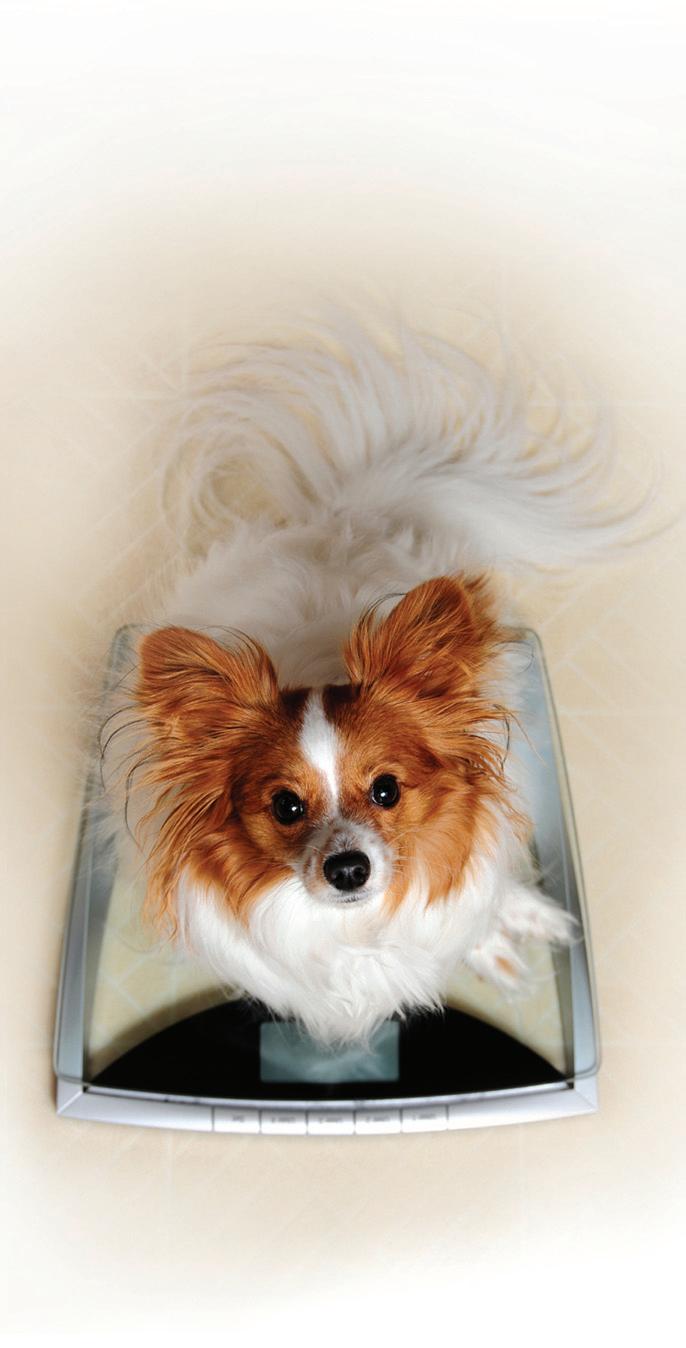
• We have the tax expertise you need when buying or selling
• We are Accredited in Business Valuations, a certification that only CPAs can hold
• We are an independent adviser with no financial stake in the transaction
We are experts in all aspects of:
• Buying and selling a veterinary practice or clinic
• Facilitating associate buy-ins
• Preparing an exit strategy
• Creating an estate plan

• Increasing the value of your practice
To maximize value and minimize taxes, contact: Lou Gatto, CPA lou@gattomcferson.com
Tom McFerson, CPA, ABV tom@gattomcferson.com

528 Arizona Ave. Suite 201 Santa Monica, CA 90401 Ph: 310-393-2434
Fax: 310-393-8777
www.gattomcferson.com
California Business and Professions Code section 4846.5(k)(1) requires a California-licensed veterinarian to complete a minimum of onehour of continuing education on the judicious use of medically important antimicrobial drugs every four years as a condition of license renewal. This requirement went into e ect in 2018 following the passage of California legislation in an e ort to curb antimicrobial resistance.
For purposes of this requirement, “medically important antimicrobial drugs” are those defined by the federal Food and Drug Administration’s Guidance for Industry #152, Appendix A. The classes of antimicrobial drugs listed in the Appendix are those considered important for use in human medicine.
For veterinarian licensees renewing in 2021, the onehour course must be taken within the previous 2019–2021 two-year renewal cycle. The requirement will then follow a four-year cycle thereafter (e.g. renewal in 2025, 2029, etc.).
To qualify as a valid CE course, the California Code of Regulations requires the following:
The course must be o ered by an approved provider listed in California Business and Professions Code section 4846.5.
The course must consist of not less than 50 minutes of instruction (CCR 16, section 2085.3(a)).
The course content (in this case, the judicious use of antimicrobials) must be relevant to veterinary medicine (CCR 16, section 2085.6).
The course instructor must meet minimum qualifications set forth in CCR 16, section 2085.7.
The record of course completion must be issued and retained for four years from the date that the course was taken (CCR 16, sections 2085.8 and 2085.9).
To qualify as a course on the judicious use of antimicrobial drugs, the course must direct at least 50 minutes to that primary topic.
Even though only one hour of CE coursework regarding medically important antimicrobial drugs is required every four years, licensees are not limited to taking only one hour to otherwise qualify for CE course credit. Indeed, multiple judicious use courses can be taken as CE, with the caveat that the same course may not be counted twice for CE credit within the same four-year time frame.
The CVMA o ers live interactive courses that satisfy the judicious use of antimicrobials CE requirement both online and at conferences throughout the year, including the upcoming Pacific Veterinary Conference (PacVet Live), June 18-19 and June 26-27, 2021. For full information about PacVet, visit pacvet.net and for information about all other CVMA CE o erings, visit the Learning tab at cvma.net.
The United States Department of Agriculture National Veterinary Accreditation Program (USDA NVAP) also o ers a free online self-guided course that will satisfy the requirement. The course is titled “Module 23: Use of Antibiotics in Animals.” USDA-accredited veterinarians may use their NVAP number to print a course completion certificate. For those taking the course without an NVAP number, a screenshot of the completion page may be captured at the end of the course and retained in records as proof of course attendance.
The CVMA courses and the USDA NVAP course are not the only courses that can satisfy the requirement. Ultimately, it is up to the veterinarian licensee to find courses that qualify as CE which also meet the onehour requirement instruction on the judicious use of antimicrobials. Whichever course a veterinarian chooses, retaining a course description and course materials is advised for purposes of CE audit.
This article is for informational and general educational purposes only. It is not intended to take the place of legal advice nor should it be considered as a legal interpretation. Although significant effort has been made to ensure the accuracy and complete-ness of the information at the time of publication, the CVMA shall not be responsible for any errors or omissions, or any agency’s interpretation, application, or enforcement of the information presented herein.
Each year, the CVMA honors extraordinary individuals and organizations who have made significant contributions to organized veterinary medicine through their participation in the CVMA and facilitation of the human-animal bond. They truly represent the heart of the veterinary profession in California.
We congratulate the recipients of this year’s CVMA awards!
For over 50 years, Dr. Dean Henricks’ dedication and thoughtful leadership have helped guide the CVMA. Not only has Dr. Henricks been a valued member of the CVMA, he has been a devoted advocate, participant, and e ective leader. Dr. Henricks served as president of the CVMA in 2010–2011, as the District V governor on the Board of Governors for two terms, and has served on numerous committees and task forces, including the Ways and Means Committee (Chair), the Veterinary Insurance Services Company (VISC) Board (Chair), the House of Delegates Executive Committee, the Leadership Development Committee, and others. “With his confident, comforting demeanor, and his knowledgeable leadership, Dean has clearly made the CVMA a much stronger organization,” reflects former CVMA president, Dr. Jay Kerr.

It is with great pleasure that the CVMA awards Dr. Dean Henricks the Distinguished Life Membership, the CVMA’s highest membership category.
Leah Shufelt has demonstrated and shared her passion for the veterinary profession as a Registered Veterinary Technician for nearly 20 years. As defining attributes, Ms. Shufelt’s colleagues are quick to cite her willingness to share her knowledge and ability to lead with confidence and compassion. In addition to her full-time work as a supervisor at an extremely busy radiology oncology service, Ms. Shufelt works as an adjunct instructor in the RVT program at Mesa College and volunteers in a program to mentor honors students, in addition to serving on the California Veterinary Medical Board’s Multidisciplinary Advisory Committee.
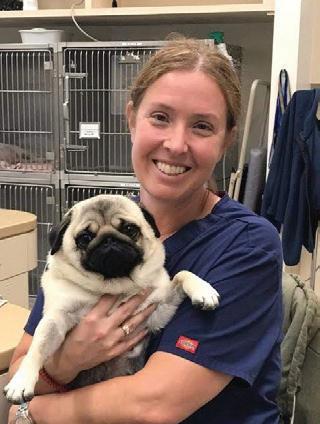
Ms. Shufelt understands the importance of organized veterinary medicine and has been involved with the San Diego County Veterinary Medical Association (SDCVMA) board and the CVMA’s House of Delegates and RVT Committee in various roles. Ms. Shufelt says, “Through these groups, I get to work alongside amazing technicians and doctors, who have shown me how important giving back is and how much of a di erence one person can make.”
As a registered veterinary technician and an instructor at Foothill Junior College’s veterinary technician program, Sandy Gregory is considered an outstanding role model and leader by students and colleagues. In 2011, Ms. Gregory founded Foothill College’s Small Animal Surgery Day, a collaborative learning event connecting San Francisco Bay Area rescue groups, veterinarians, and veterinary technology students for purposes of spaying and neutering small animals (rats, rabbits, hamsters, guinea pigs, rats, and mice), many of which were rescued from hoarding situations. The program aims to combat small-animal overpopulation and help find forever homes for the animals. The program provides students with valuable hands-on experience in restraint, medical calculations, injections, fluid management, induction and recovery from anesthesia, and surgical assisting skills, preparing them to enter the veterinary field with knowledge and confidence.
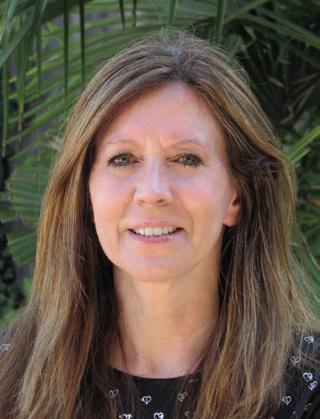

In March of 2020, in the wake of the statewide lockdown resulting from the coronavirus pandemic, the Sacramento Society for the Prevention of Cruelty to Animals’ (SSPCA) CEO Kenn Altine created the Paw Pantry Project. It quickly became apparent to Mr. Altine that many pet owners were struggling to a ord to feed their pets, particularly isolated seniors and those who lost a job as a result of the pandemic. Through tireless fundraising e orts, the Paw Pantry Project provided approximately 219,000 meals for 31,200 animals. Because of his quick response and leadership, Mr. Altine managed to keep pets with their families, thus preserving the increasingly important human-animal bond in recent times of isolation.
Mr. Altine is also commended for his creation of the Spay and Neuter Enhancement Program with the SSPCA. Through Mr. Altine’s leadership and fundraising skills, the Program enabled the renovation of an existing administrative building into a 6,400 square foot spay and neuter clinic, increasing capacity by 38 percent. It is estimated that the new facility will result in 5,000 additional spay and neuters, thus significantly reducing the number of unwanted and abandoned animals entering area shelters.
Dr. Carrie Jurney serves as the President of Not One More Vet (NOMV), a non-profit organization established to address the mental health and suicide crisis faced by the veterinary community. In 2014, NOMV was created as a Facebook page where veterinary professionals could discuss mental health challenges they faced. Dr. Jurney first joined founder Dr. Nicole McArthur as a moderator of the Facebook page. She served as Board secretary before becoming president in 2019. Under her leadership, NOMV has grown from a Facebook group with 20 members into a charity organization that provides financial and professional mental health support to veterinary professionals in need, with over 26,000 members worldwide. NOMV has become a strong non-profit entity, o ering an educational program focused on wellness, a growing support grant program providing financial support for struggling veterinary professionals, and a partnership with BetterHelp, providing one month of free psychotherapy for those in need. In addition, Dr. Jurney has worked to forge a partnership with the University of Tennessee and Auburn University to develop an online crisis support system designed for veterinary professionals and is advancing research into wellness, mental health, and the reduction of suicide in veterinary professionals.
California Animal Hall of Fame Award | 2021 Inductee: Ben

Owner: Eric and Tracy Darling
Veterinary Sponsor: Redondo Shores Veterinary Center

When Ben, a black Labrador, trained with the National Disaster Search Dog Foundation (SDF), his trainers took note of his exceptional athleticism, drive, and trainability. In 2010, he was partnered with firefighter Eric Darling and since then, he has been deployed 19 times to aid in search and rescue e orts in California and across the country. Captain Mark Seastrom, an urban search and rescue o cer with Ventura County Fire Department who has worked alongside Ben, reports, “Ben’s enthusiasm for human life and desire to serve has become the standard to which all of our dogs are now held.” Ben has also represented the SDF at numerous educational programs and demonstrations and has excelled as an ambassador for the search and rescue community and retired in 2020.
 Photo credit: Felipe Silva
Photo credit: Felipe Silva
The California Veterinary Medical Board (VMB) and its Multidisciplinary Advisory Committee (MDC) convened on April 21–23, 2021. CVMA Executive Director Dan Baxter, Director of Regulatory A airs Dr. Grant Miller, Registered Veterinary Technician liaison Marie Ussery, and veterinarian liaison Dr. Ken Pawlowski attended the online meetings on behalf of the CVMA. At those two meetings, the following items were discussed:
Pursuant to ongoing conversations at the VMB regarding telemedicine, an MDC subcommittee presented research and recommendations to define telemedicine, tele-triage, telehealth, and teleconsultation. The MDC discussed the proposed definitions extensively and, following comment from both VMB sta legal counsel and public legal counsel, decided to continue to develop the definitions before sending them to the VMB for consideration.
An MDC subcommittee developed a Frequently Asked Questions document to assist licensees with understanding the Veterinarian-Client-Patient Relationship (VCPR). After discussion, the MDC voted to submit the document to the VMB for review and potential approval.
The VMB discussed the telemedicine expansion waivers that are currently in place due to the COVID-19 pandemic. The first of those waivers is related to the condition-specific VCPR requirement, while the other relates to the authorized time allowed for prescription refills. The VMB voted to extend both waivers until the pandemic is over.
In response to the 2021 emergency licensing and permit fee increase, the VMB voted to recommend statutory changes that will increase premises permit registration and Veterinary Assistant Controlled Substance Permit (VACSP) fees to lower RVT licensing fees from $350 (current fee) to $225. These actions were taken in response to extensive public comments received by the VMB triggered by the 2020 increase. In that regard, the CVMA was itself highly vocal about the need to o set the substantially increased RVT license fee. The fee package will be considered by the state legislature and, if passed, may be enacted in January of 2022.
Two vacancies on the MDC were filled by Dr. Kevin Lazarche (second term) and Dr. Dianne Sequoia. Congratulations to both doctors on their appointments!
The CVMA extends our sincere sympathy to the friends and family of those remembered.
Dr. J. Irvine Bingham, a CVMA Life Member, passed away on December 28, 2020. Dr. Bingham earned his DVM from Washington State University in 1963, thereafter serving as a partner for 10 years at a practice in Orangevale. In 1973, he opened Green Valley Animal Clinic, a general practice clinic in Folsom, which he later relocated to Georgetown. In all, Dr. Bingham worked in Northern California for 57 years and was actively practicing until his death.
Dr. Eugene Lynch, a CVMA Life Member, passed away on February 4, 2021. Dr. Lynch received his DVM from the School of Veterinary Medicine at UC Davis in 1962. Dr. Lynch first practiced at the Balboa Pet Hospital in San Francisco and then served as a relief veterinarian at veterinary hospitals throughout Northern California until his retirement.
In memory of deceased members, the CVMA makes a donation to the California Veterinary Medical Foundation, whose mission is dedicated to “nurturing kindness, education, and well-being for all animals, people, and the environment.”

Congratulations to the Graduating Class of 2021!

After nearly 10 years as the dean of the UC Davis School of Veterinary Medicine, Dr. Michael Lairmore is stepping down to begin a new chapter in his career. Starting in June, he will take a sabbatical and then resume his career at UC Davis as a Distinguished Professor in the Department of Pathology, Microbiology, and Immunology.
UC Davis’ School of Veterinary Medicine has flourished under Dr. Lairmore’s leadership. During his two five-year terms as dean, the school has been ranked number one nationally by U.S. News & World Report, number one globally in the QS World University Rankings, and has led all veterinary schools nationwide in research funding.
UC Davis has seen exceptional growth and transformation under Dr. Lairmore’s vision and guidance. Among his numerous accomplishments, he has launched an ambitious $500 million campaign to expand the Veterinary Medical Teaching Hospital; established an Office of Global Programs to develop and promote worldwide educational and research opportunities and research
collaborations across the campus; increased infrastructure and academic support for the One Health Institute; and implemented numerous diversity initiatives.
Thanks to Dr. Lairmore, the CVMA has had a strong relationship with UC Davis. “From the first day that I met him, he made it clear that he recognized the importance of organized veterinary medicine and that he would be a strong supporter of the CVMA,” recalls Valerie Fenstermaker, past CVMA Executive Director. “He encouraged student membership and participation in CVMA activities throughout the years and included the CVMA leadership in many school events.”
Dean Lairmore has been an asset to CVMA leadership, attending nearly all Board of Governors meetings despite his incredibly busy schedule. His insight and comments on many important issues were valuable additions to numerous board discussions throughout the years.
The CVMA wishes Dean Lairmore success and fulfillment in his new position.
The last year and a half has been full of unexpected changes for the graduating classes of the UC Davis School of Veterinary Medicine and the WesternU College of Veterinary Medicine. The COVID pandemic turned traditional learning on its head, making virtual classrooms and labs the new normal. The class of 2021 proved, however, to be determined and resilient, making the most of the unusual situation. The CVMA salutes the 100 veterinary students graduating from WesternU on May 19 and the 136 veterinary students graduating from UC Davis on May 21. Their dedication to learning and to the veterinary profession is exceptional. Congratulations and best wishes for a successful career ahead!







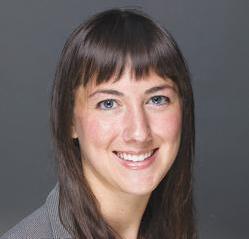




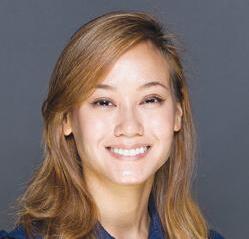



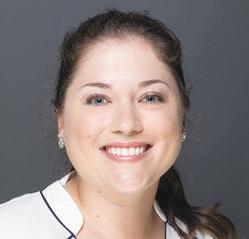



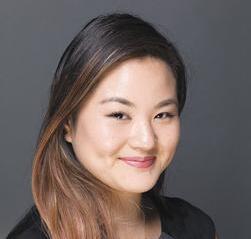


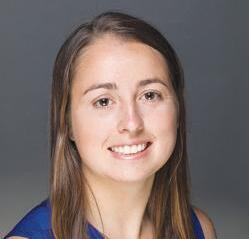

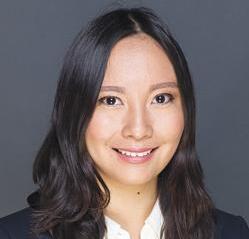
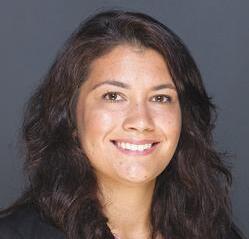
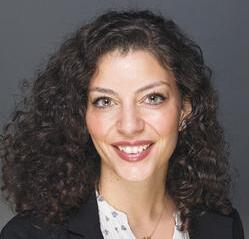


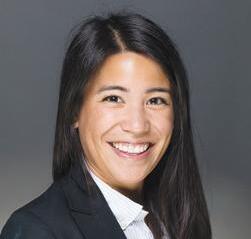

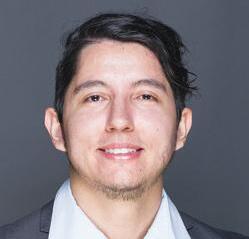

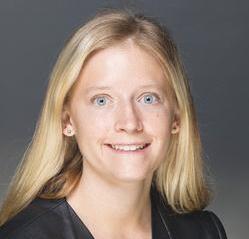



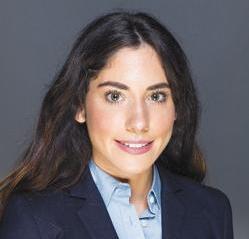
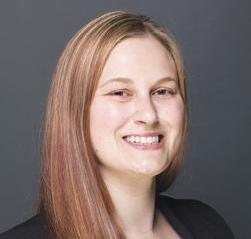
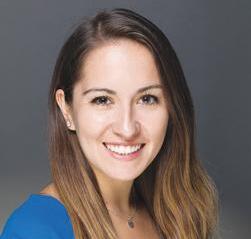

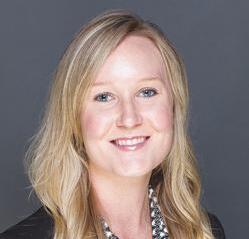




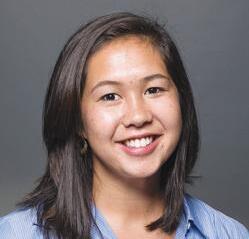
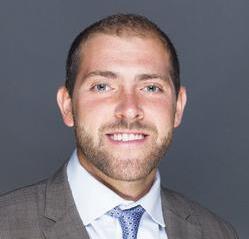




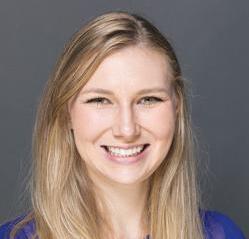
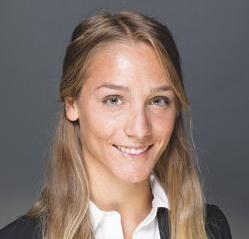


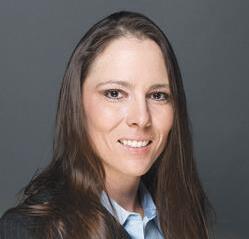

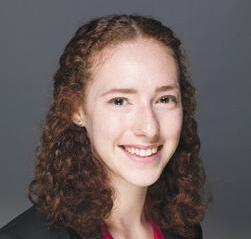

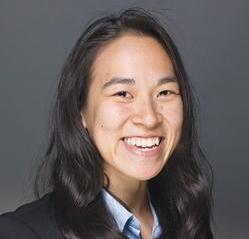


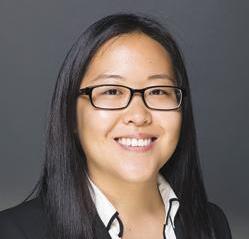
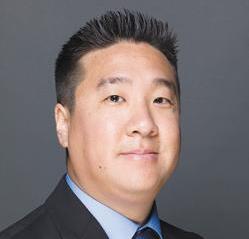



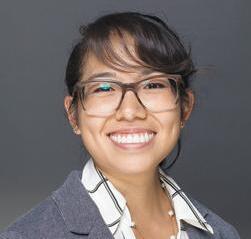



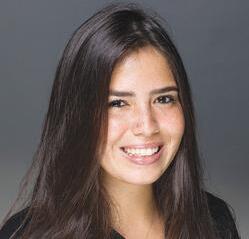
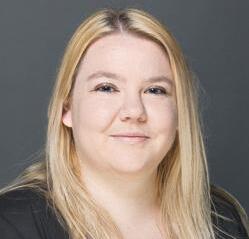

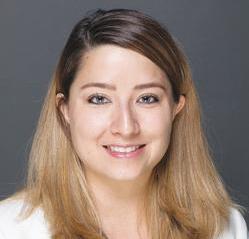

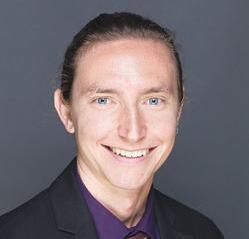

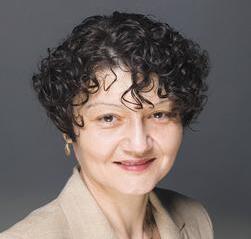



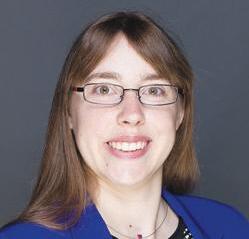



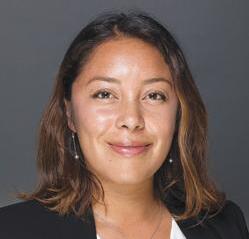


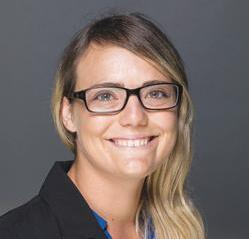

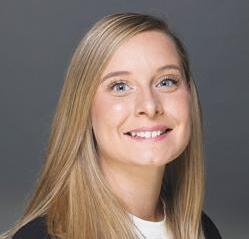

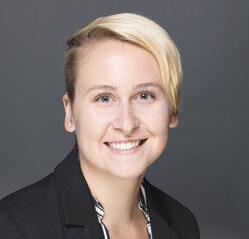












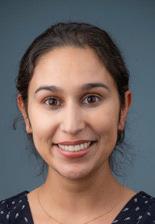












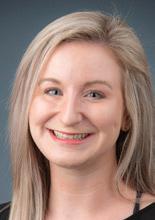


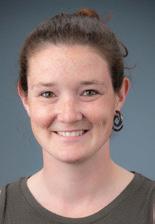



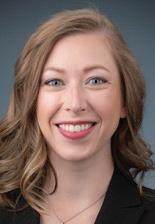


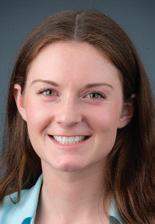

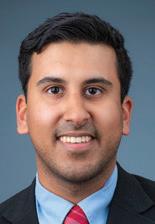

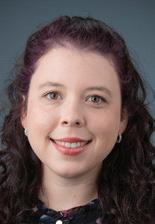


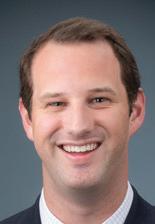




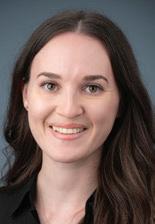

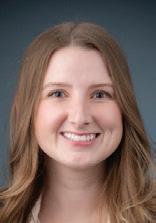
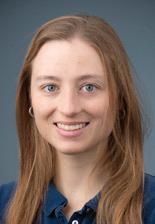




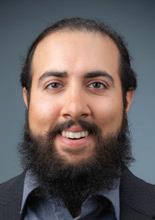
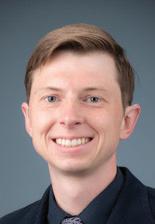
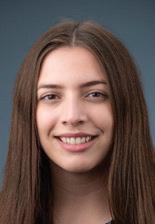




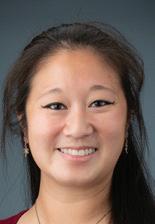

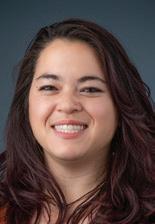
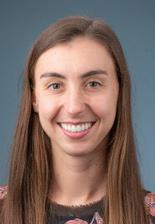


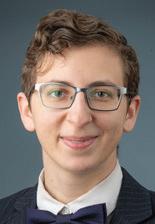
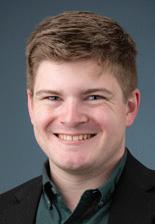








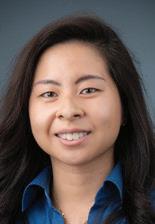

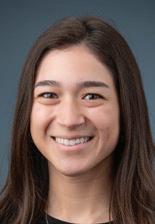






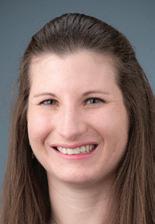

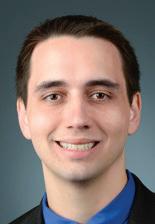







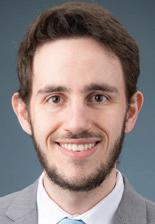

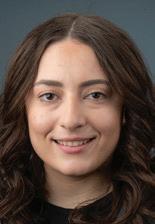



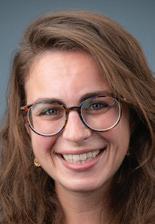
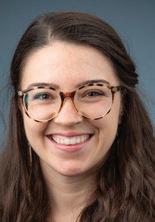

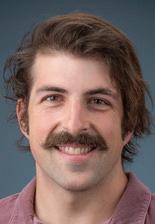
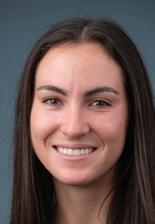





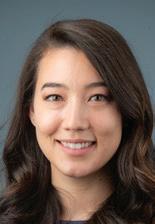
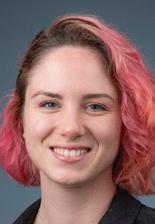



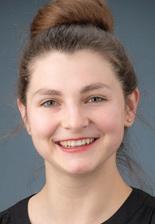
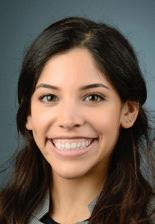


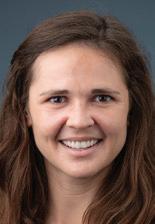


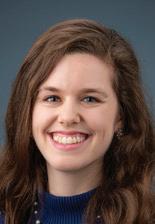


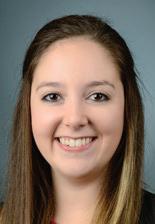


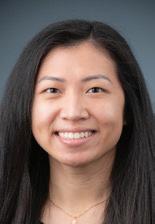



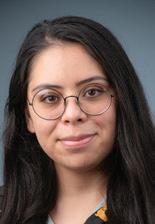



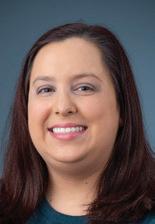
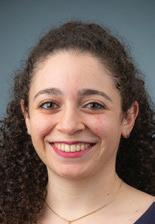



In January of 2020, the California Veterinary Medical Board (VMB) implemented an emergency fee increase to the statutory maximum for all veterinary license and permit categories. The VMB, which is the state government organization that regulates the veterinary profession, cited severe budget shortfalls and pending insolvency as justification for the emergency fee increases. The increases fell disproportionately on Registered Veterinary Technicians (RVTs) by more than doubling the RVT initial license and renewal fees from $160 to $350. The CVMA actively spoke out on behalf of RVTs, citing an untenable strain placed on their profession, and requested that the VMB explore options for lowering the RVT licensing fees.
In response to the CVMA’s request and numerous additional public comments, the VMB directed its Multidisciplinary Advisory Committee (MDC) to research the issue and explore alternatives for lowering RVT licensing fees. The MDC created models that proposed a $225 RVT fee and developed several fee adjustment schedules for Board consideration. In that regard, adjusting the current RVT license fee from $350 down to $225 will create a $1 million deficit that may only be filled by raising veterinarian licensing fees and premises permit registration fees.
At its recent meeting on April 22, the VMB voted to adopt statutory changes that will increase premises permit registration fees to $525 annually and Veterinary Assistant Controlled Substance Permit (VACSP) fees to $100 in order to lower RVT licensing fees to $225. The fee package will be considered by the state legislature and may be enacted in January of 2022 if passed.


































Looking for technician-specific or practice management CE?
















We’ve got you covered at PacVet Live! Join us online for live and fully interactive sessions on June 18, 19, 26, and 27 and earn up to 32 CEUs. Attend all four days, single days, or single sessions—it’s up to you.
Friday, June 18 • 1:00 PM-5:00 PM
Dentistry/Practice Profitability (up to 4 CEUs)





Mary Berg, BS, RVT, RLATG, VTS (Dentistry)

Sponsored by CareCredit

Saturday, June 26 • 9:00 AM-12:50 PM
Emergency and Critical Care (up to 4 CEUs)
Megan Brashear, BS, CVT, VTS (ECC)
Sponsored by CAVMRC
Saturday, June 26 • 1:00 PM-5:00 PM
Pain Management (up to 4 CEUs)













Stephen Cital, RVT, SRA, RLAT, VCC, CVPP, VTS-LAM

Sponsored by Elanco Animal Health
Sunday, June 27 • 1:00 PM-5:00 PM
Behavior (up to 4 CEUs)
Debbie Martin, LVT, CPDT-KA, KPA CTP, VTS



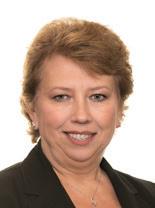
Place your ad in the Career Center at cvma.net. There are two options for classified advertising:
1. Online advertising
2. Online and in one issue of the CaliforniaVeterinarian
CVMA Members NonMembers
*Price includes the first six lines of text. Each additional line is $10/$11 for non-members. A line consists of approximately 50 characters. **If you wish to place a print ad only, contact Laura Phillips at 916.649.0599 or classifieds@cvma.net.
Online only
30 days online $149 $199
60 days online $249 $299
90 days online $349 $399
Online and in one issue of the California Veterinarian
60 days online + one issue of the California Veterinarian $299 $349
90 days online + one issue of the California Veterinarian $399 $449
POST AN ANONYMOUS AD OR RESUME
Resume – Post a confidential resume. Go to cvma.net. Click on the Resources tab then Classifieds in the right menu to get started.
Ad – Place a confidential ad by creating an anonymous email address and using it when posting your ad.
POSITIONS OFFERED
NORTHERN CALIFORNIA
Veterinarians
If you have any questions, please contact customer service at 860.437.5700, clientserv@yourmembership.com, or classifieds@cvma.net.
DEADLINE DATES FOR AD SUBMISSIONS IN THE CALIFORNIA VETERINARIAN:
Issue Deadline
Jan/Feb December 5
March/April February 5
May/June April 5
July/Aug June 5
Sept/Oct August 5
Nov/Dec October 5
If your ad is received after the deadline, it will go into the following month’s California Veterinarian. After the deadline, the CVMA cannot alter or cancel ads. The CVMA reserves the right to edit copy and does not assume liability for contents of classified advertising. Prices subject to change without notice.
Experienced Veterinarian Wanted to join our fast-paced, well-established 10-doctor practice located in a rural community with a low cost of living. We are in the heart of the Central Valley; 2 hours west of Yosemite, 2 hours from San Francisco, and 2 hours from Napa. Our town o ers a vibrant nightlife with our restaurant row, boutique shopping, and is also a great place to raise a family with excellent schools and lovely parks and recreational activities. We desire a smart, enthusiastic, energetic, client-oriented veterinarian with strong internal medicine and surgical skills. Our hospital o ers state of the art equipment including digital radiography, new ultrasound machine, new endoscopy machine, hydrotherapy unit, digital dental radiology, laser therapy, and much more! We are a paper-light practice with digital records. We o er Canine Rehabilitation, Acupuncture, Orthopedic Surgeries, Soft-Tissue Surgeries, Emergency Care, and everything in between. Our support sta is phenomenal, two technicians per doctor plus designated support sta such as Leads, Dental Technicians, Pack Washers, etc. No Emergency Shifts. 24-32 scheduled hours a week, with a great work-life balance. Extremely Competitive Compensation Package, plus an additional $100,000 signing bonus! Excellent Benefit Package includes: Health Insurance, Dental, Vision, 401K, CE, Licenses and Dues, Generous PTO, and Uniforms. Ownership Buy-in Potential available for the right Vet. Please email Sara Leimgruber, Hospital Administrator at sleimgruber@valleycrittercare.com to submit your CV.
Come join our team in wonderful Fairfax and see why we love living and working in Marin! We are a growing and thriving, independent, familyowned veterinary practice located just 20 miles north of San Francisco. We care for dogs, cats, and exotics, and offer general wellness, medicine, surgery, dentistry, acupuncture, and are lucky to have excellent working relationships with multiple local specialists to offer more advanced care when needed. We want to help you find your niche in our practice. We are seeking a full or part time associate veterinarian who understands the importance of exceptional client service in obtaining good outcomes for our patients. We strive to provide top-notch medical and surgical services for our patients, excellent service to our customers, while maintaining a n upbeat and enjoyable work environment. Convenient access to local specialists and emergency services allows us to always provide the very best care for our patients while maintaining work-life balance personally. Email resume and cover letter to apply aaronwentzell@hotmail.com.
Four Paws Veterinary Center is looking to add an associate veterinarian to our busy three-doctor practice. We are a family-run and family-oriented full service companion animal center located in Dublin, California. We are committed to providing all beloved companion animals; the highest quality, up-to-date veterinary care. Our location is ideal for the candidate who desires to see a wide variety of medical, dental and surgical cases. We operate Monday–Friday, day shifts. We o er a competitive base salary, medical and dental insurance, uniform allowance and continuing education allowance. Email fourpawsjen@gmail.com.
Full-time and part-time D.V.M. positions available at an established, profitable practice. The Facility has been thoroughly remodeled, with all the most modern updates, including digital x-ray, full in-house lab and ultrasound. The Clinic is privately owned, well loved by the community and boasts an exceptional support sta . The emphasis is always on learning and quality of care. Located in the scenic Santa Cruz Mountains and with easy access to San Jose, San Francisco and the Bay Area this job comes with a most desirable lifestyle. The right candidate can expect a generous compensation package, ongoing education and an assertive career path, including ownership potential. Please send your resume to BCVet95006@gmail.com.
Relief vet needed one to three days a week for a non-profit clinic in Oroville, CA. We do high volume spay/neuter and low cost medical services. Please contact Janice at 503.705.1928 if you can help. Competitive wages.
Join our awesome, fun, and professional team! We are a well-established privately owned veterinary hospital in Alameda, CA (SF Bay Area). We are looking for a FT or PT veterinarian to join our amazing family. Our clients are the best, and we have a fabulous sta with many years of experience. We practice high quality medicine balanced with the ability to treat animals of families with di erent budgets. We treat dogs and cats, and would love to o er exotic medicine as well. Typical hours are MWF 8-6pm, Tues/Thurs 8-8pm. No weekend hours! Medical/Dental/Vision insurance for FT employees. Email your resume to Dr. Laura Wagner at alamedapet@yahoo.com.
Marysville Veterinary Hospital is seeking a FT or PT associate to help us grow our practice. The Hospital is a well-equipped paperless practice with digital x-ray, ultrasound, digital dental radiography, the latest Idexx in-hospital laboratory equipment and more. If you enjoy a varied and challenging caseload, case continuity with clients and patients, and an exceptional support staff, then you just may be the doctor we are looking for! The hospital is located 40 minutes north of Sacramento, 2 hours from Lake Tahoe, and 2 hours from the Bay Area. Compensation includes a guaranteed base salary with a production bonus. Our benefit package includes 1 month paid time off, 401K with match, CE allowance, VMB and DEA license renewals, AVMA and CVMA fees, VIN membership, plus health, dental, and vision insurance. There are no emergency duties. Come join a great team in delivering outstanding patient care, customer service, a commitment to building lasting relationships with our clients, and fostering our clients’ bond with their pets, which is the cornerstone of our hospital’s mission. Please contact Dr. Steve Sanders at 925.963.1462 or email ssandersdvm@gmail.com.
We are seeking a part-time or full-time associate veterinarian to join our team and grow with our practice. We are a busy, small animal, private practice located in North Orange County. We emphasize high-quality medicine and strong doctor-client-pet relationships. As associates, we would like to continue to learn from each other as well as mentor and guide our newer team members. We strive to maintain a professional, dedicated, and enjoyable working environment. We have recently finished a complete remodel that allows us to o er an improved client experience, patient care, and e ciency. We o er a competitive salary and benefits package. We would love to hear from you. Email kgb378@outlook.com.
Part-time small animal veterinarian needed. Flexible schedule for vets with children! Busy, friendly small animal practice that provides a ordable care medicine to rescue groups, financially constrained families and anyone else. Located in Spring Valley, CA. Email sharonzito@gmail.com.
Full time Associate Veterinarian is needed for a small Animal Hospital in San Fernando Valley, California. Excellent pay and benefits, no emergency duty, every experience level considered. Email: dr.fmakkar@gmail.com Phone: 818.434.6766.
Seeking Associate Veterinarian for AAHA member small animal hospital: FT/PT. 6 veterinarians, 35 support team members, 5 RVT’s, progressive, Fear Free practicing hospital. Each doctor has a daily assigned veterinary assistant. Please be comfortable with soft tissue surgery, dentistry, companion animal medicine, and client and team open communication. Companion Class IV Cold laser, Sonosite ultrasound. The business owners are on-site active problem solvers and “cheerleaders”. All after hour emergencies referred. Dr. Daffner has expertise with abdominal ultrasound and brachycephalic obstructive airway disease. Competitive salary, moving stipend, health/dental/vision, vacation, 401K with matching, CE with time off, pet discounts, and lunch every payday! Visit our Facebook page, read our Yahoo reviews, and peruse our website to learn more about the team, who we are and what we represent. Our hospital is located in the beautiful South Bay just south of Los Angeles, only 2 miles from the beach. Our client base is elite and educated. Dr. Kimberly Daffner, Owner/Veterinarian Email kdaffner@fpcrb.com Phone 310.376.0072.
Ellie Wattles, DVM, President, Broker
Beka Herrera, Vice President, Broker
Connie Burke, CPA, CVA, CM&AA
SAN FRANCISCO BAY AREA: Residents enjoy a wide variety of unique attractions within the immediate Bay Area. Adjacent to a major freeway, the PX is conveniently located in a high activity shopping center w/ ample parking. Leased, ~ 1,439 sq. ft. facility offers 2 exam rooms, large treatment area, 20+ stainless steel cages & 2 runs. Full-service PX also includes recently updated digital DR X-RAY, dental machine & 2 anesthetic machines. PX is experiencing tremendous growth year over year. 2020 Gross ~$1,015,479 produced w/ limited office & doctor hours. Exceptional profitability. Potential for significant continued growth with new ambitious owner. N NEW LISTING! PRACTICE PRICE: $979, 400
SONOMA COUNTY: Wine country. 1 hour North of San Francisco. Special community with strong economic base. Area offers unique amenities. Excellent visibility of the practice with ample parking. Practice offers personalized, quality veterinary services with reasonable fees. Very high demand for services. ~2,500 sq. ft facility with 3 exam rooms. Equipment includes D X-RAY & in-house lab. 2020 gross ~$815,000. Excellent profitability. Under-utilized practice in 2020 with limited DVM hours, no weekend hours. P PRACTICE PRICE: $676, 000 REAL ESTATE PRICE: $675, 000
KERN COUNTY: Situated in a growing community located ~1 hour North of LA with a strong agricultural, oil & general broad economic base including a new Amazon fulfillment center. There are many nearby amenities & affordable housing. This general Small Animal practice offers an ~3,000 sq. ft. facility with 3 exam rooms, 60+ cages and 10 runs. Equipment includes ultrasound & digital X-RAY. 2020 Gross was approximately $1,074,000. Potential to significantly increase hours of operation to grow productivity. P PRACTICE PRICE: $667, 000 REAL ESTATE PRICE: $425, 000
SAN DIEGO, SOUTH BAY: Situated in the San Diego Bay between two of the largest cities in the County. Well-established practice is located within a strip center with the leased facility consisting of ~1,968 sq. ft and 3 exam rooms. Exceptionally well-equipped PX including Digital X-Rays (one for body and one for dental), Color doppler ultrasound, Abaxis analyzer (all owned by the practice). Low rent factor. 2020 gross over $1.7 Million. Excellent growth and profitability. Rare opportunity for practice this size. C CALL FOR PRICING & ADDITIONAL DETAILS.
MONTEREY BAY AREA: A unique community that embraces family, prosperity, and the highest quality of life. The Pet Spending Potential Index for the surrounding area is 96% higher than the national average. Well established, growing PX is in an attractive ~1,600 sq. ft. leased facility, including 2 exam rooms, 12 cages & 2 runs with room for expansion. Full service, small animal practice includes extensive equipment. 2020 gross of ~$970,000 was produced primarily with ~1 DVM/day and limited hours, including no weekend C CALL FOR PRICING & ADDITIONAL DETAILS
GREATER SACRAMENTO: Located approximately 25 miles northeast of Sacramento. Free-standing, leased facility consists of ~2,300 sq. ft with 2 exam rooms, 18 cages & 10 runs. Computerized practice includes digital X-Ray and ultrasound. 2020 Gross ~$1.28 Million. General full-service small animal hospital with special reproduction services. C CALL FOR PRICING & ADDITIONAL DETAILS
VENTURA COUNTY: The town itself is about 20 miles from Ventura or Santa Clarita. Free-standing facility consists of 1,461 sq. ft w/ 2 exam rooms. Equipment includes new leased digital X-Ray and IDEXX lab. 2020 Gross ~$711,000 produced with relief DVMs only, limited services and no weekend hours. Multiple opportunities for growth with owner operator. Motivated Seller. PRACTICE PRICE: $365K. REAL ESTATE PRICE ONLY: $399K.
INLAND EMPIRE- Rare Opportunity: Located in the heart of southwest Riverside County and ~1.5 hours from L.A. & San Diego. PX is located in a popular shopping center w/ ample parking. ~2,800 sq. ft. hospital includes 3 exam rooms, & multiple runs/runs. Well-equipped PX w/ digital X-Ray & IDEXX lab. Under-utilized PX w/ limited DVM hours& services. 2020 Gross ~$1.7 Million. PX PRICE: $1. 1 Million. RE PRICE ONLY: $400,000.
GREATER LOS ANGELES: Sold to a corporation! Free standing, ~5,000 square foot facility with 5 exam rooms. Well established, full service, computerized, small animal multi-doctor hospital. 2020 projected gross of ~$2.9 Million. It’s a great time to sell as there’s a shortage of practices available for sale. Buyer demand is high with favorable interest rates at historic levels. Contact us to learn how we can help achieve your goals of selling or buying!
545 Sespe Avenue Fillmore, CA 93015 Phone: 805.524.3195 Fax: 805.524.3192
E-mail: PacProInc@aol.com Website: www.pacificproinc.com
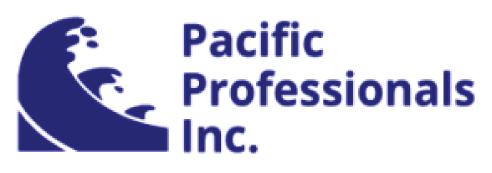
Are you an equine/food-animal CA-licensed Veterinarian or RVT interested in a paid position teaching evening online classes from home 6–8 times a year to help veterinary assistants become CA licensed RVTs? If so, please contact Dr. Al Aldrete, Veterinary Allied Sta Education (VASE), www.vetstaedu.com at 530.219.0621 or aaldrete@sbcglobal.net.
Busy full service small animal hospital for sale in beautiful Monterey County. Established 30+ years with loyal clientele and excellent sta . 1.5 doctor practice with room to grow, lease hold in busy shopping center. 1900 sq ft near ocean. Digital rads (including dental), Abaxis lab machines, computerized. O ces for 2 doctors, 2 exam rooms, 4 runs, 22 cages and separate isolation ward. Reduced hours recently- gross 2020 $1.25M. Practice price $800,000. Owner wants to retire! Email centeranimalhosp@att.net.
Well-established small animal hospital in the Northern California foothill community of Georgetown, generating $1.5 million plus in revenue during 2020. Solid and consistent Net Profit before owner salary. Located 20 miles from Auburn (@ I-80 & SR 49 exit) and about 20 miles from Placerville (US 50). Black Oak Animal Hospital (BOAH) is situated a short drive to the Lake Tahoe area for skiing and other outdoor recreation activities, an hour from Sacramento and about 2 hours from the San Francisco Bay Area. BOAH is well situated to enjoy a rural lifestyle and the ability to connect with clients on a long-term basis, plus enjoy recreational, social and entertainment activities close by. Are you tired of being an employed associate with limited opportunity to own a hospital and control your professional life and personal activities? There are many possibilities to grow this practice beyond its current revenue level by a motivated and dedicated new owner(s). Seller has operated this practice for 42 years and is willing to remain at the hospital to assist a new veterinarian during the transition period. Asking $700k for the practice. Excellent lease terms available for the building, or the facility and hospital property are available for purchase at the time that the hospital is purchased. Great location in town, nicely equipped, that includes an experienced and skilled long term and loyal group of doctors and sta . PLEASE CONTACT: Jim Remillard at jremillard@aol.com, or by phone 530.836.7332/o ce; or 530.308.8620/mobile. You can also reach out to hospital owner Dr. Irene Sakaishi @ irenesakaishi@sbcglobal.net – 530.333.1544 (hospital) – 530.333.0428 (home).
Turn Key Veterinary Practice for lease including 40 years of past clients records, existing equipment as part of lease in a free standing building located on main entrance to Sanger, with signage located at 80 N. Academy Ave Sanger, CA. The Building is 2,400 square feet and the owner is Asking $1.25 triple net for rent for the practice and Goodwill and the practice is ready to open as soon lease is negotiated and signed. Excellent opportunity for a Veterinarian just receiving his license or one that has been working in a high cost of living area, such as the Bay area or parts of Los Angeles and San Diego. Sanger is only 15 minutes outside of Fresno, CA and a very desirable area to live and raise a family. Please contact 559.284.0123 or email mark@saitocompany. com if you have interest or questions.
· New! NCPC1 - Western Nevada County. 1+ DVM Small Animal practice. Located in a great area with increasing growth. P: $900K RE: $650K

· New! CC102 - South Central Valley. Well established owner-veterinarian small animal practice catering to the Bakersfield area. The practice is 65% canine and 35% feline, operating 5 days a week. Gross revenue for 2020 was over $800,000. Buyer’s after debt compensation is projected to be over $200,000! P: $598K
· CAT19 - Cat Practice in California Wine Country. Feline only practice located in one of California’s most desirable areas. Limited competition and with wellestablished clientele. P: $95K
· NCS1 - Only 1 hour from Yosemite National Park. Practice has great cash flow and affordable real estate. This 1 DVM practice will provide an idyllic lifestyle for its next owner. P: $495K RE: $350K
· CC100 - 1 DVM Small Animal practice in a expanding area of Fresno. Location has great exposure from drive-by-traffic and adjacent businesses. Affordable lease rate and revenue up 7%.
P: $365K
· CO11 - Santa Barbara County practice in a beautiful small community. 1.5 DVM Small Animal practice provides a gross revenue $900k on limited hours and no weekends.
P: $550K RE: $1.2M
· SCA3 - Corona/Riverside Area SalePending
· NCW1 - Sonoma County SalePending
· CC12 - Santa Cruz County SalePending

· SCL1 - North Orange County SalePending
Whether you are looking to buy or sell, Simmons & Associates can facilitate both. 2020 was a record year for veterinarians and practice sales and 2021 is trending in the same direction. Find your dream practice or new opportunity from the above listings or reach out for a practice valuation. With over 43 years of experience and knowledge Simmons & Associates are the clear industry leaders.
















profession is unique. Your
should be, too.